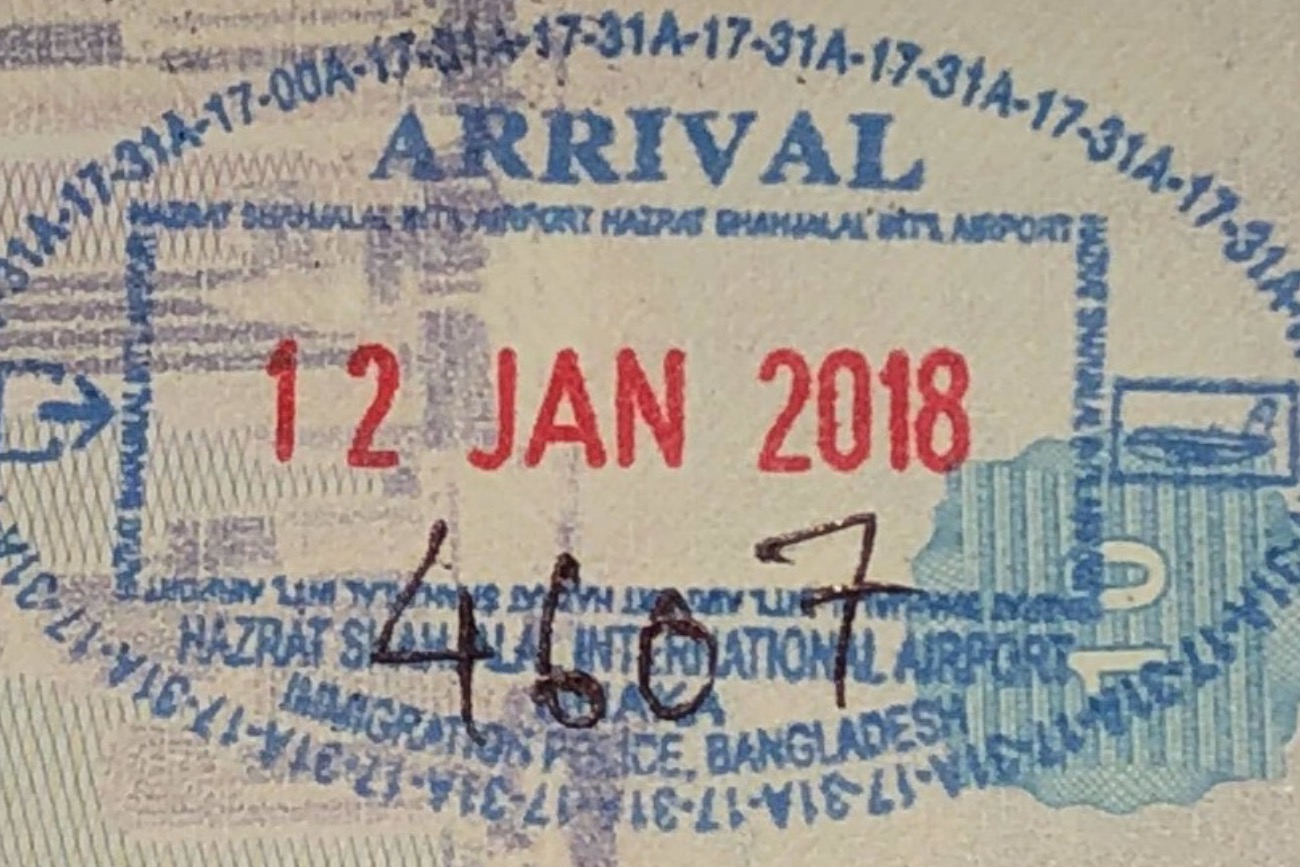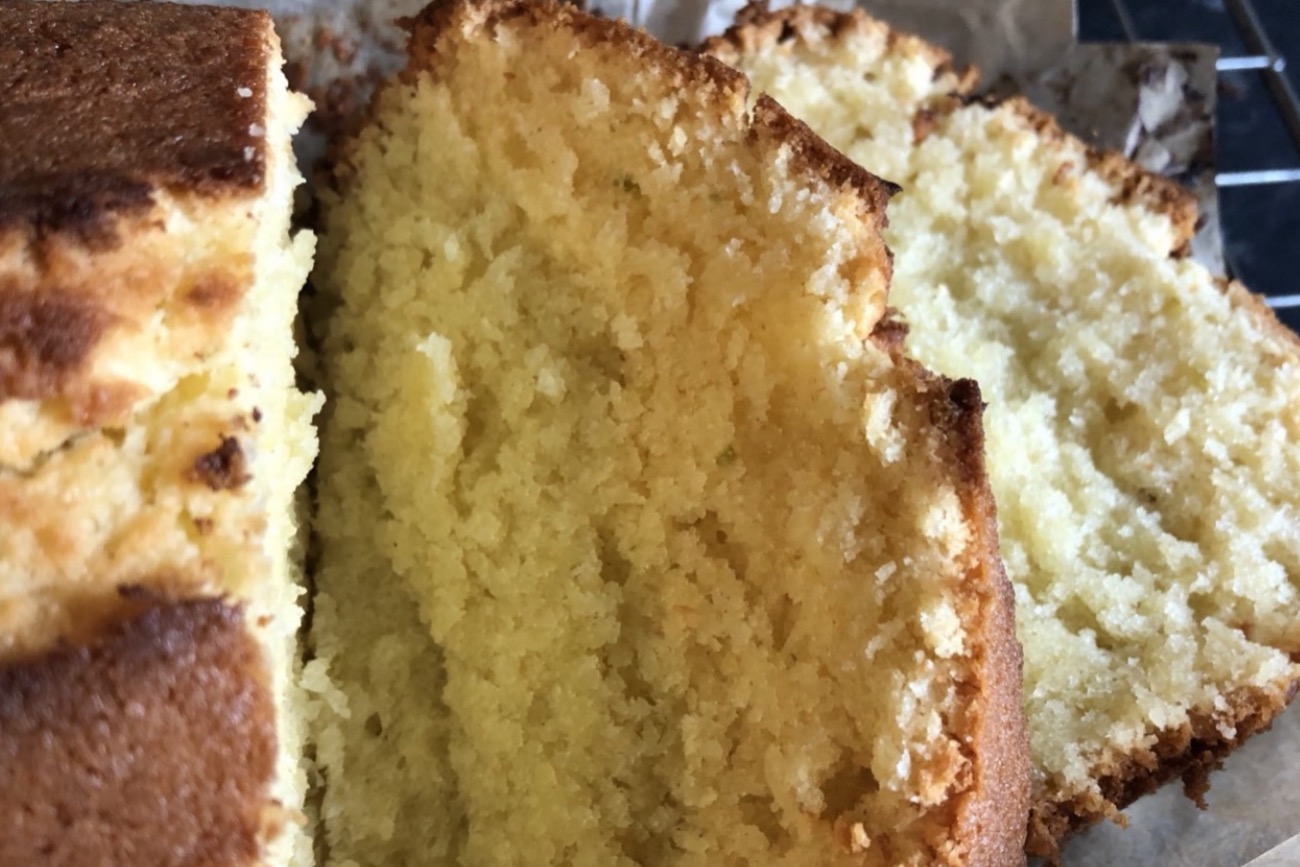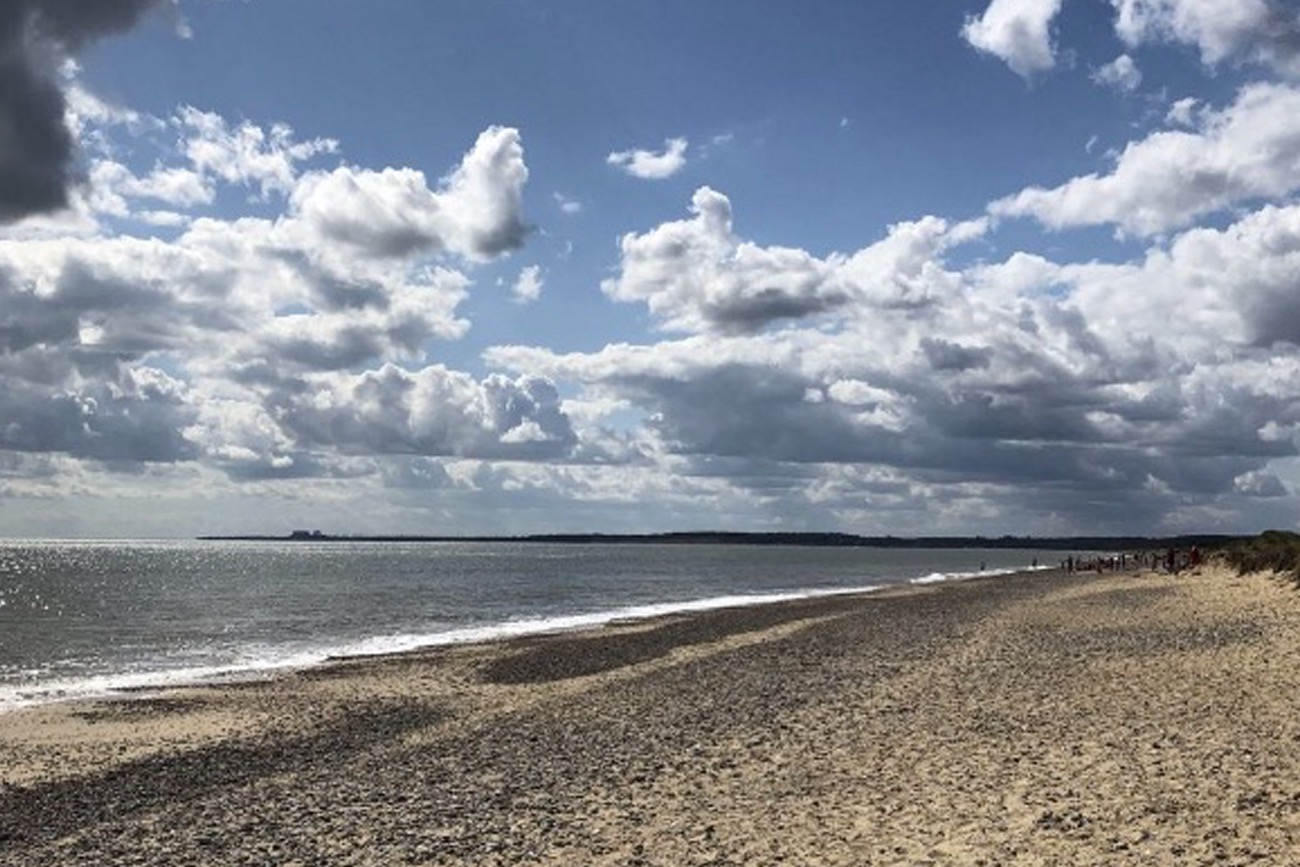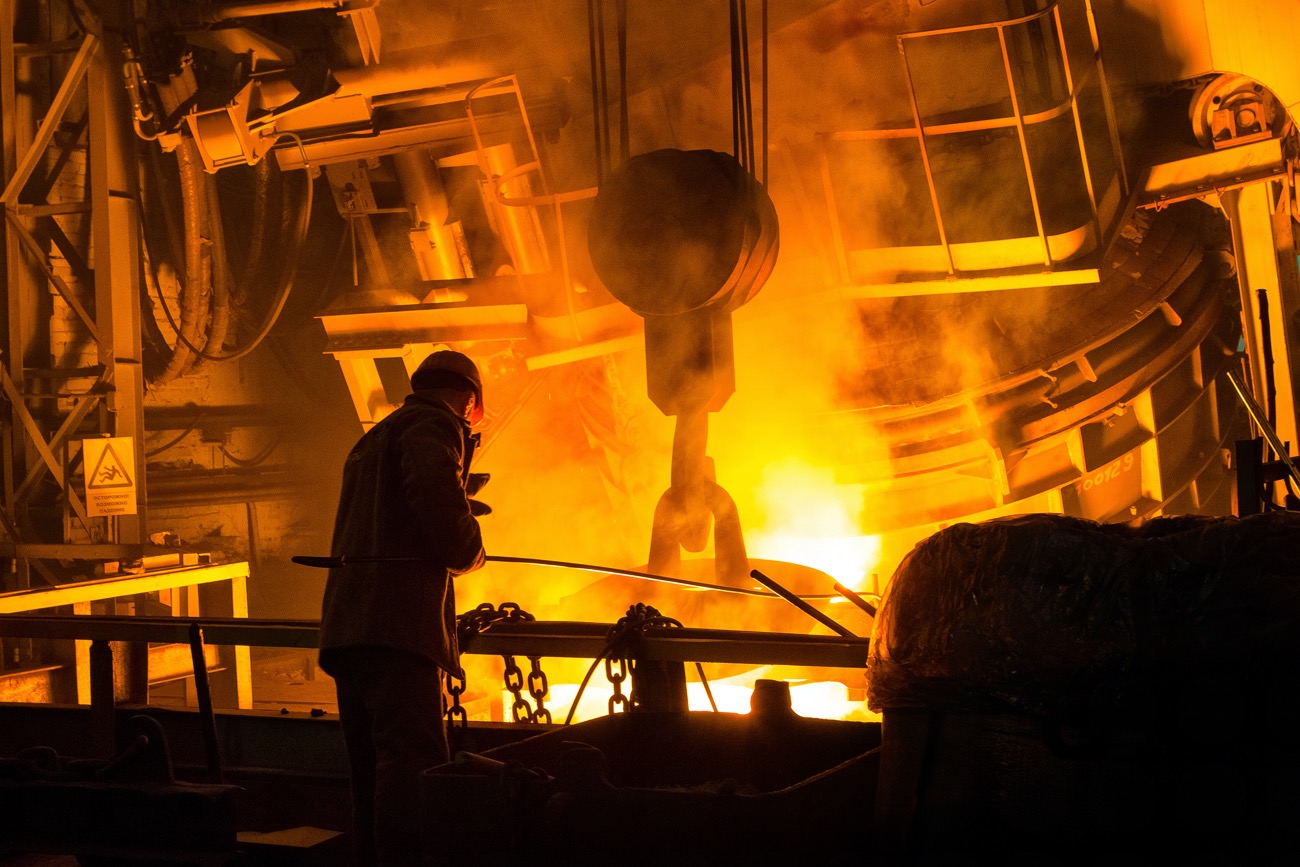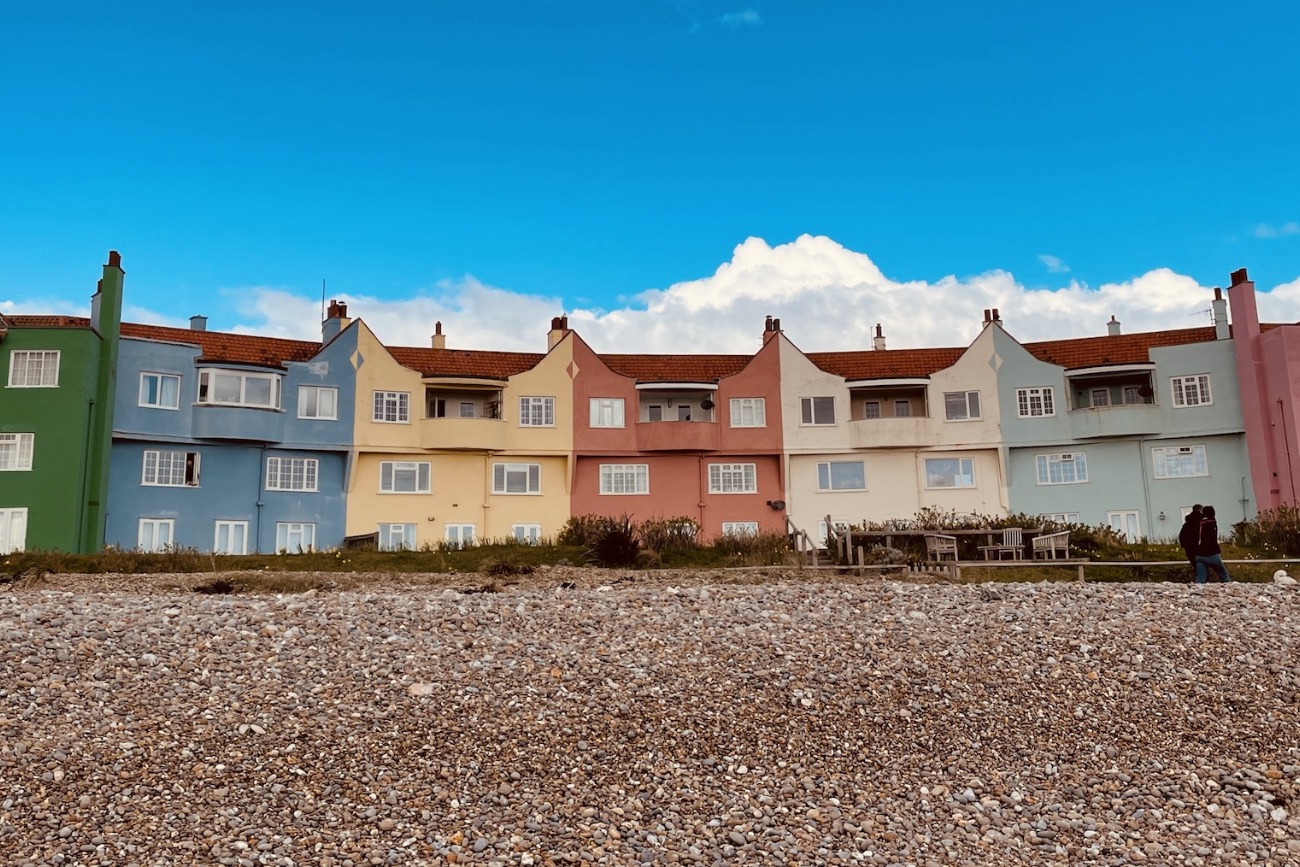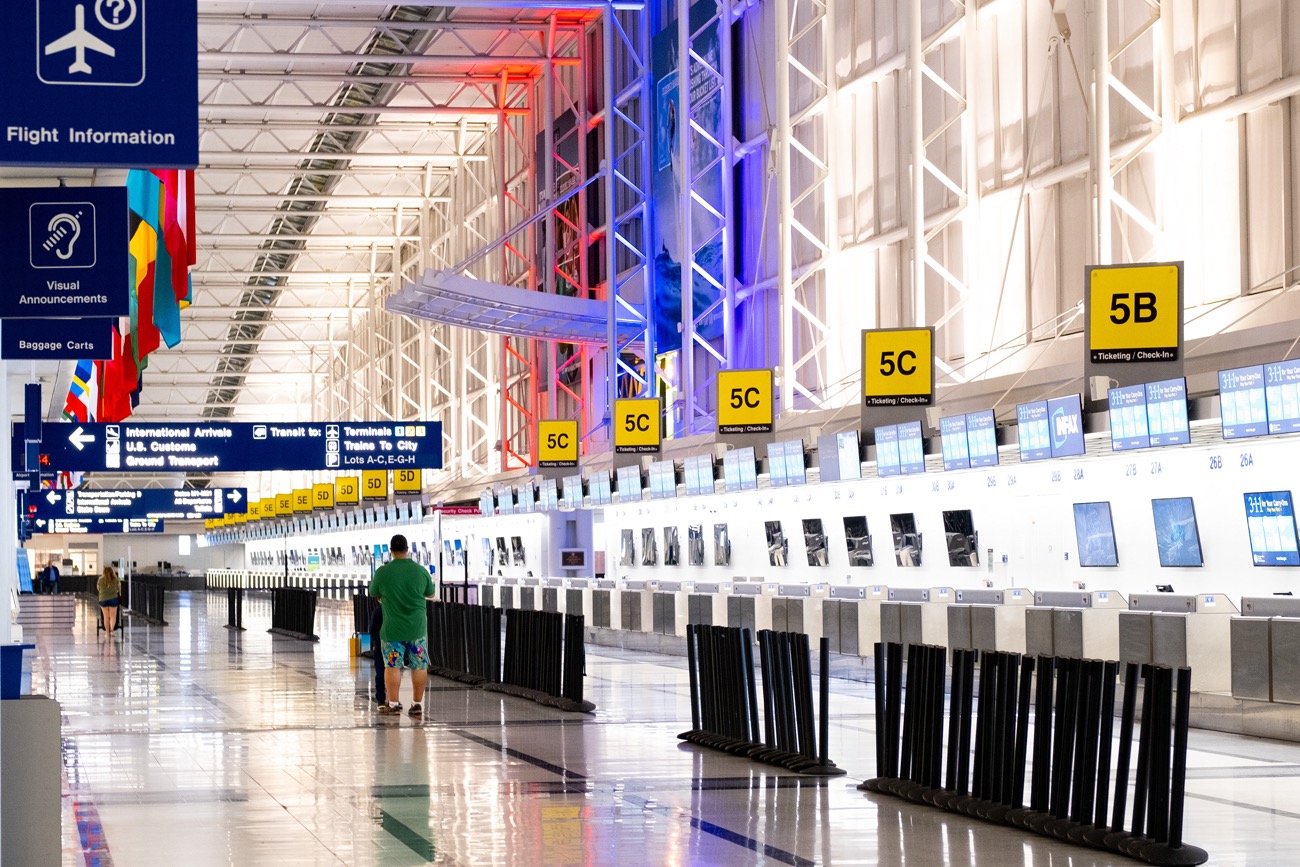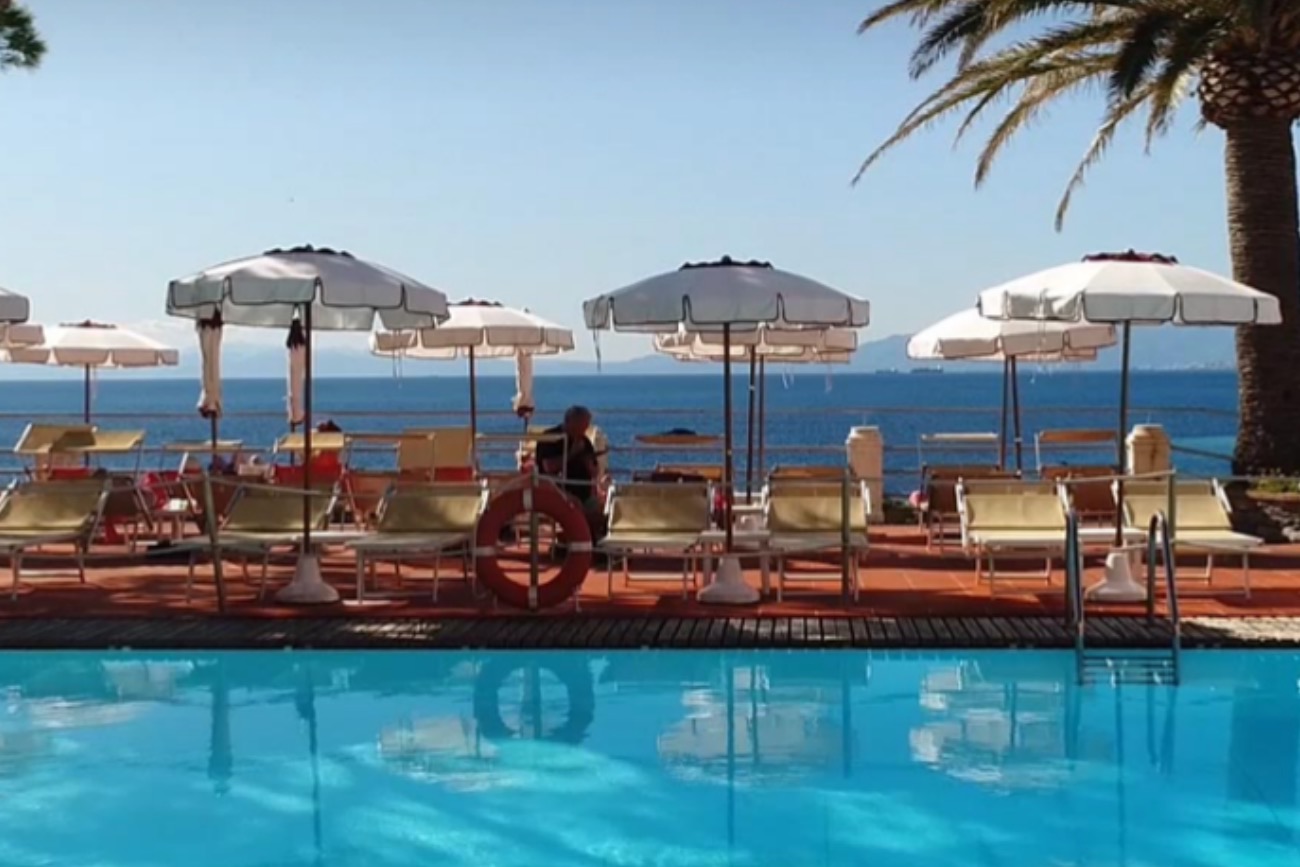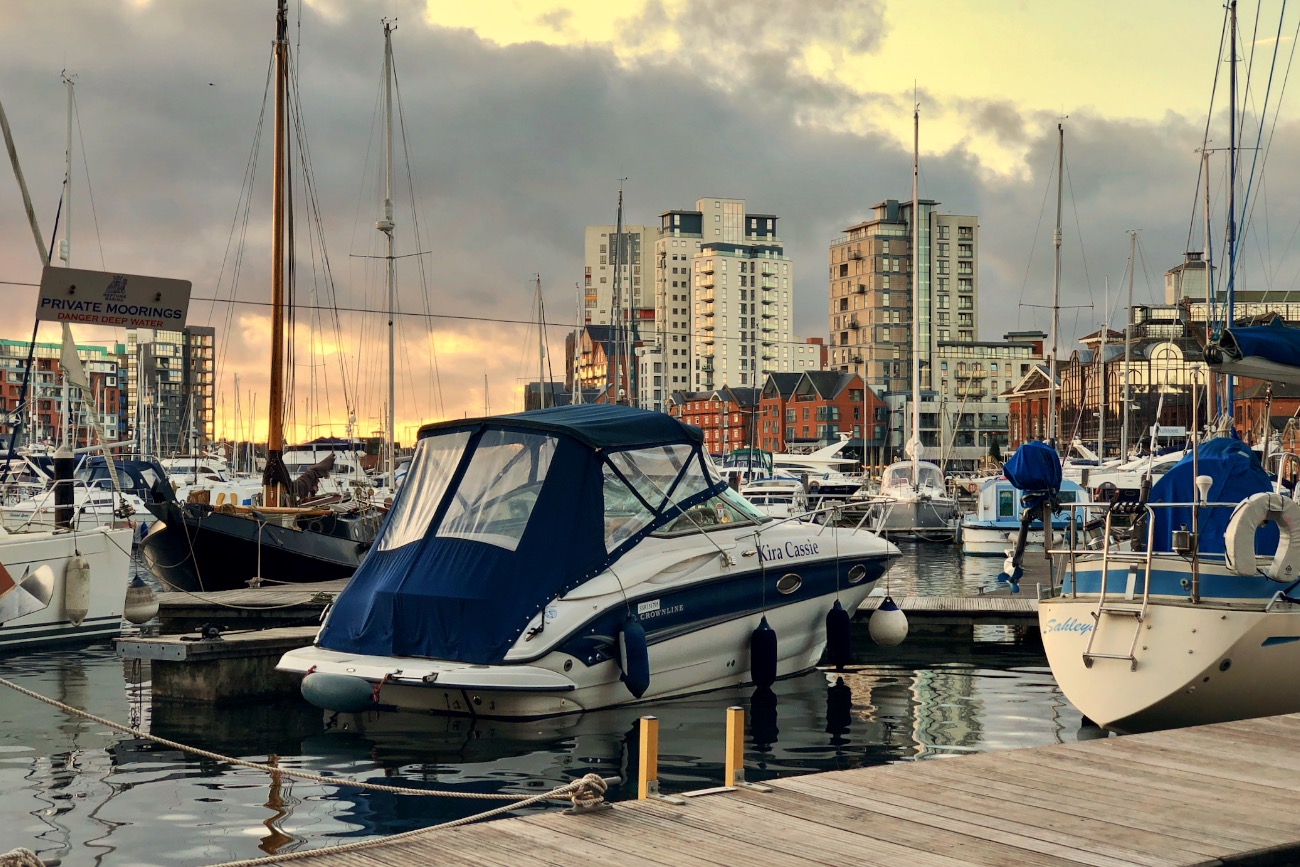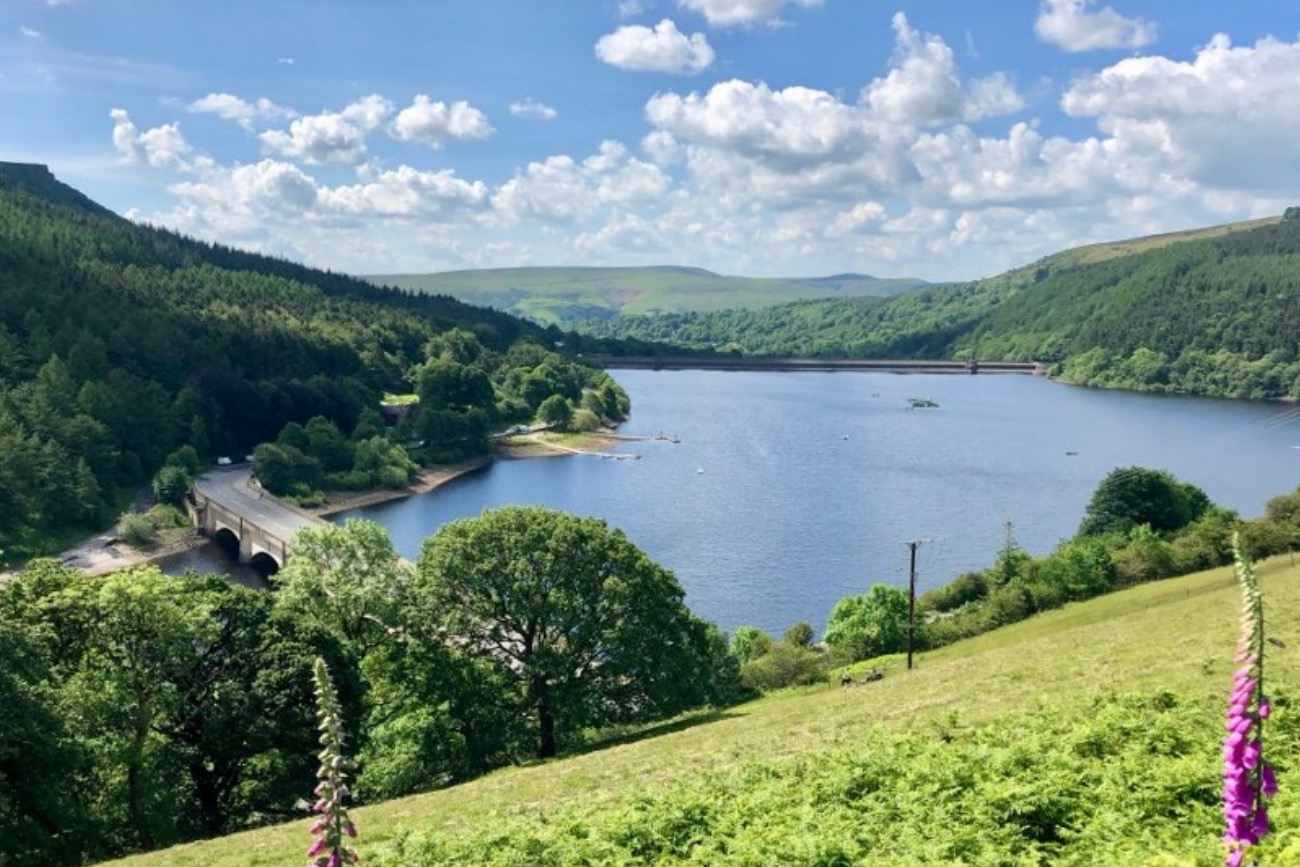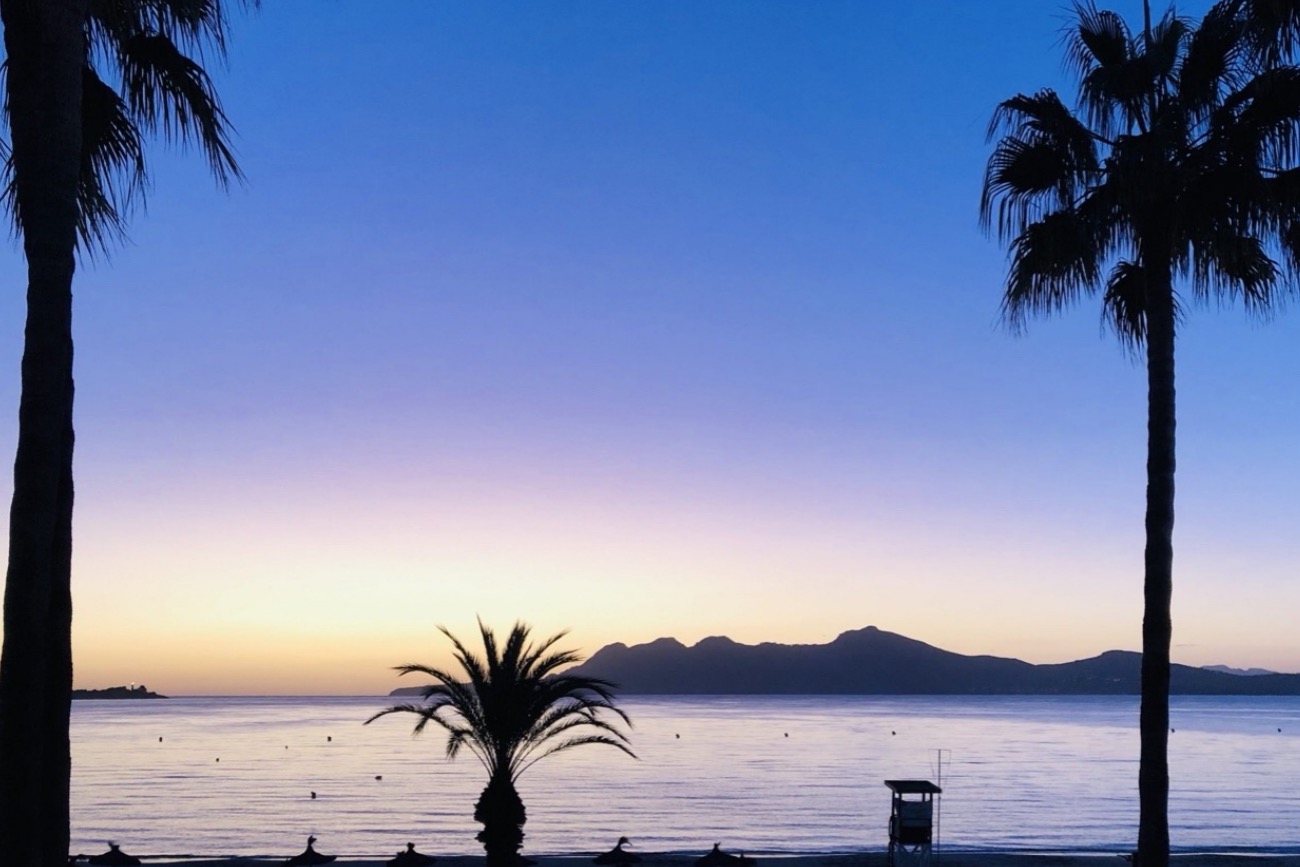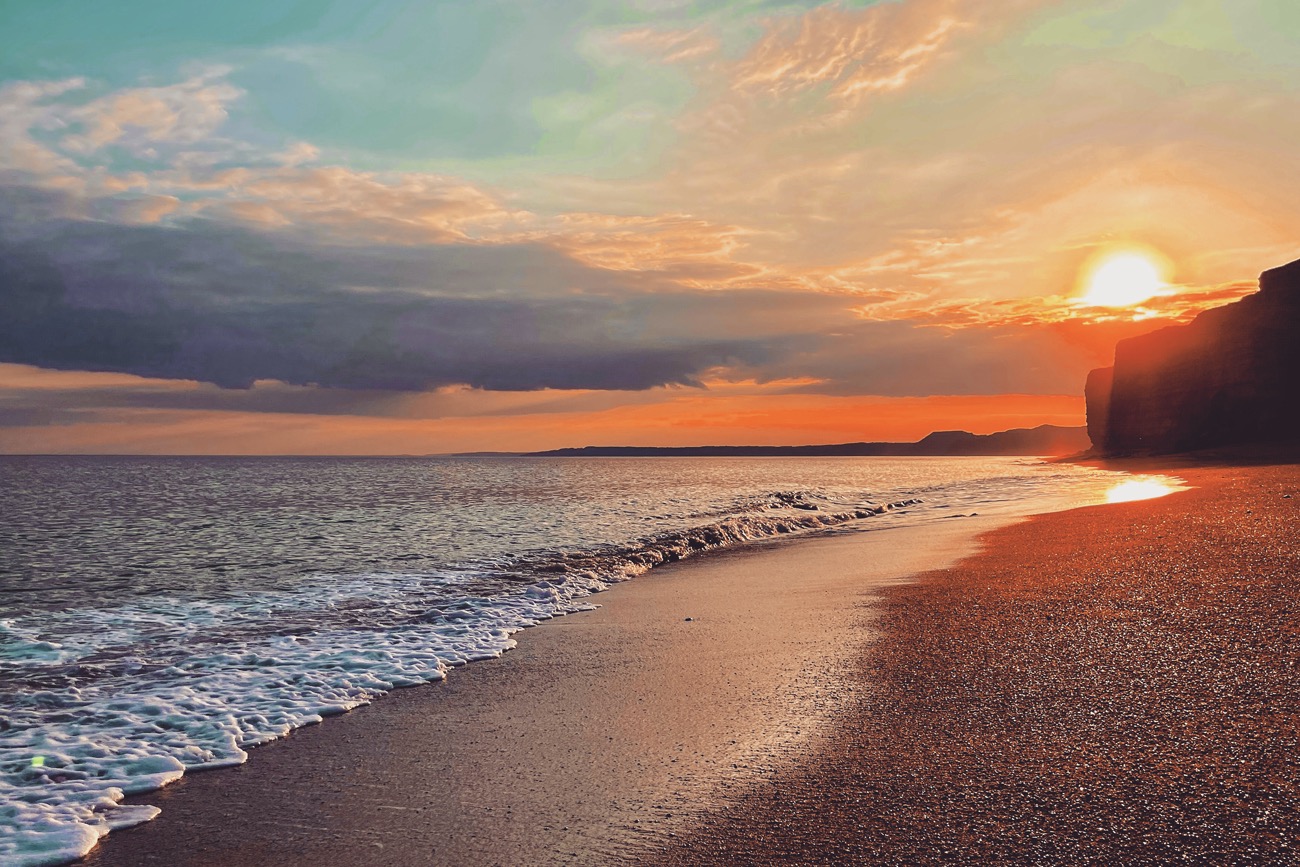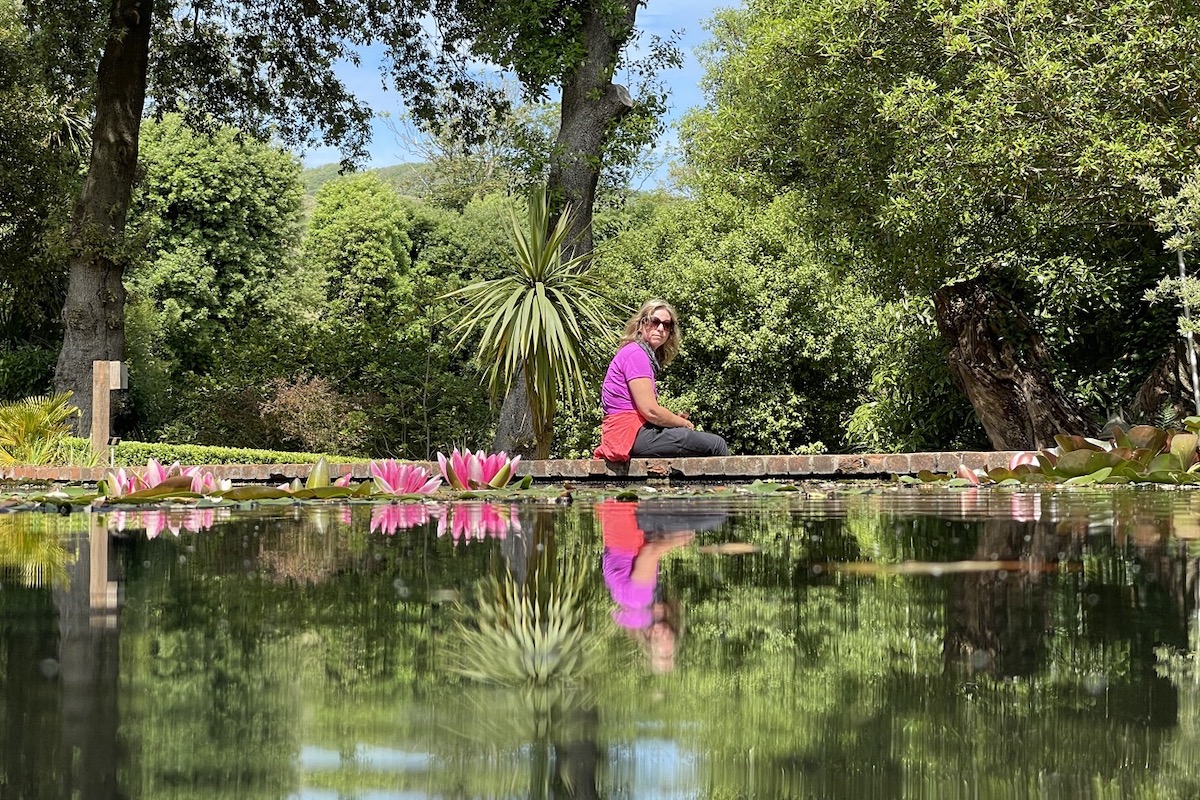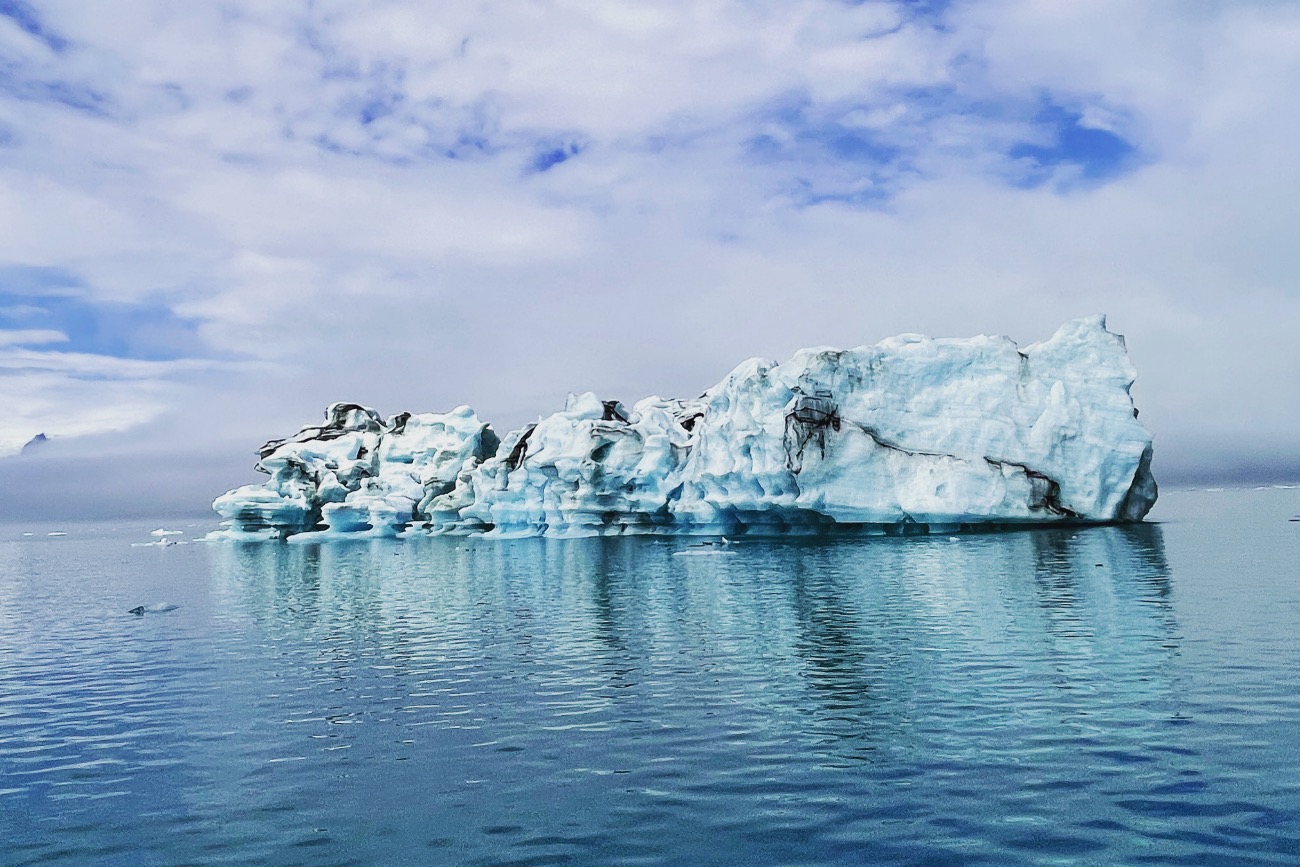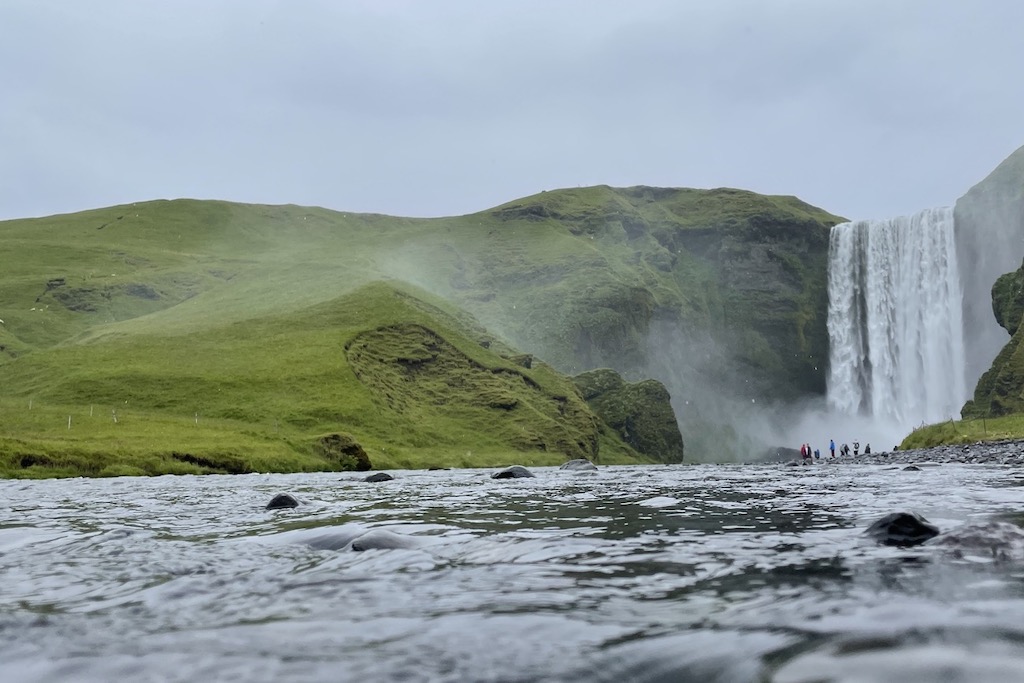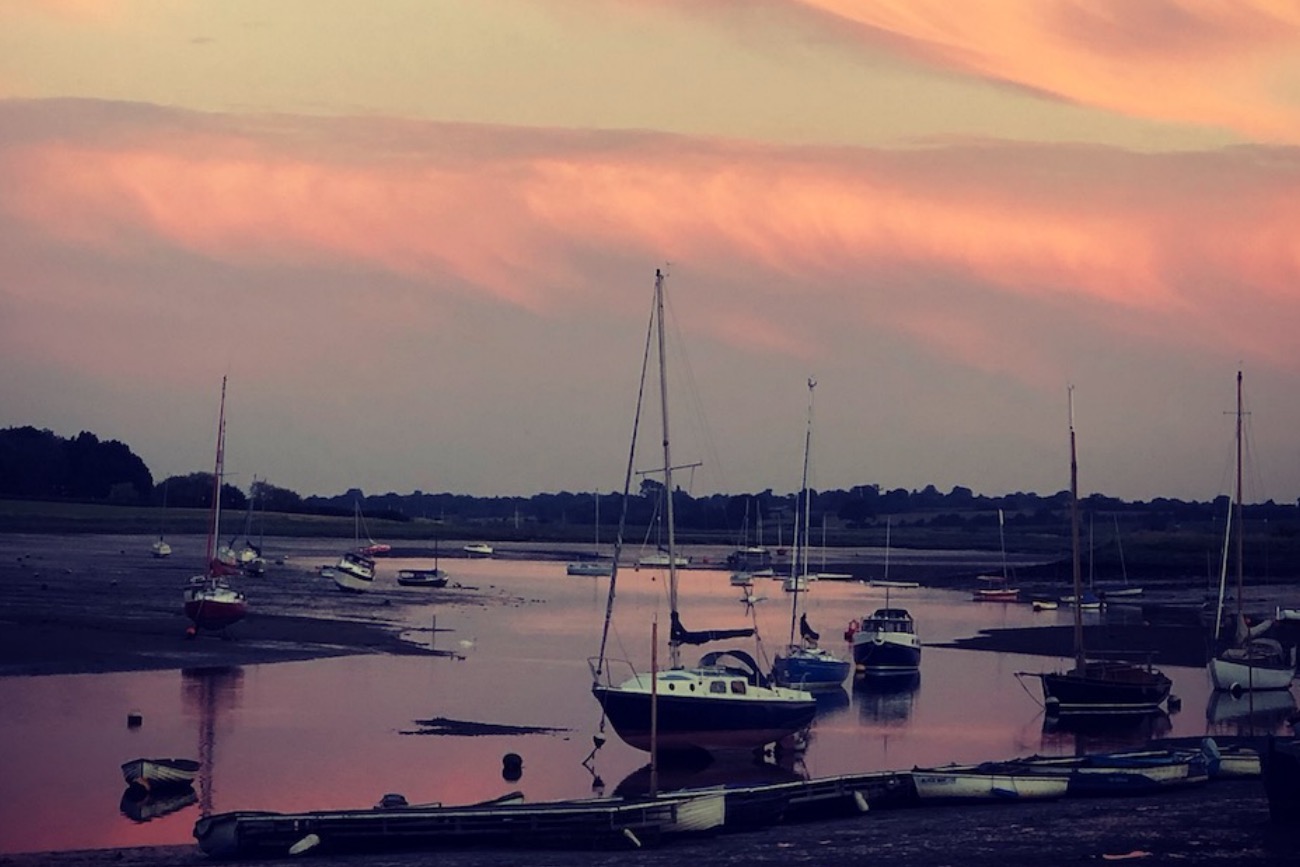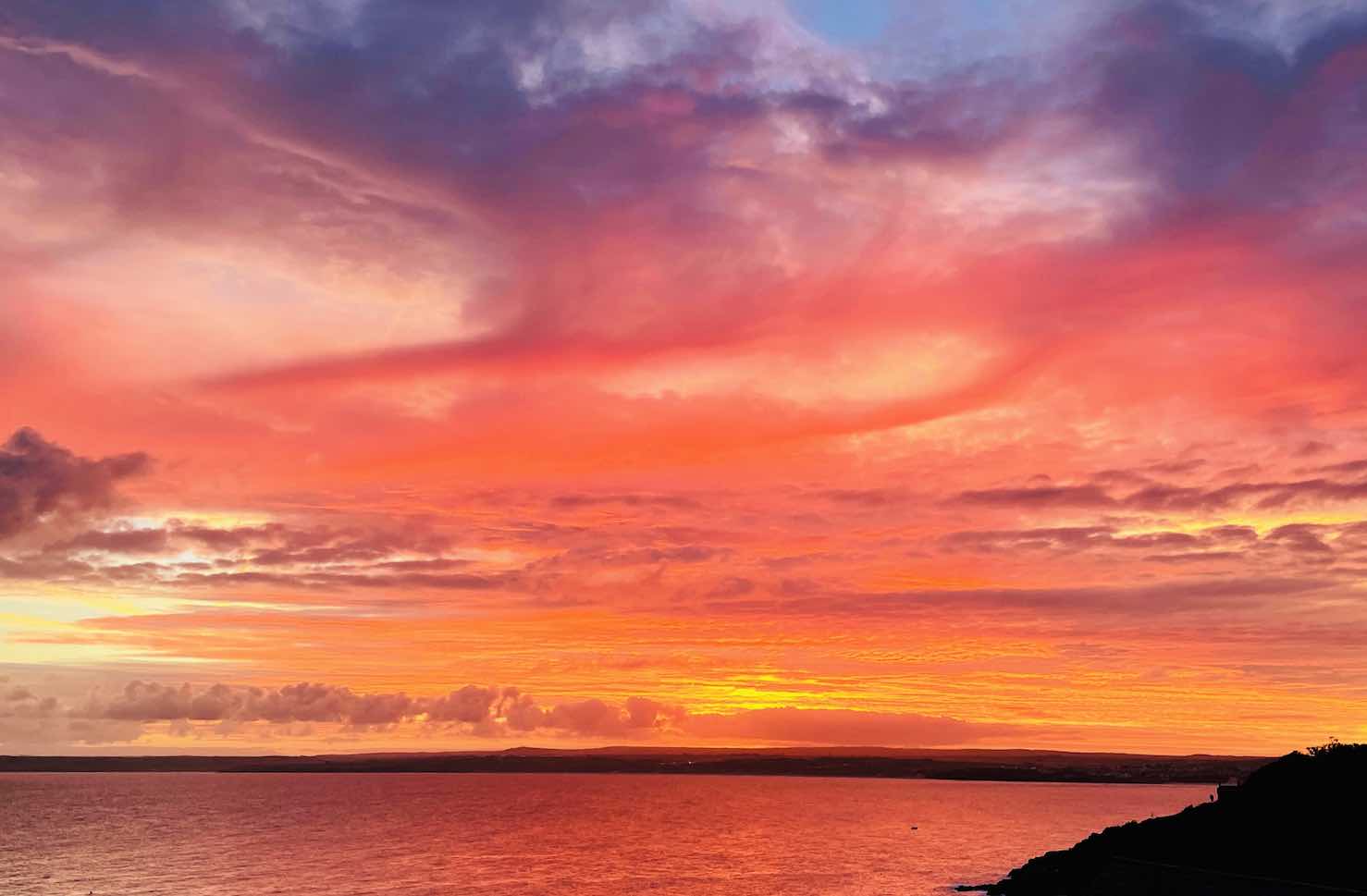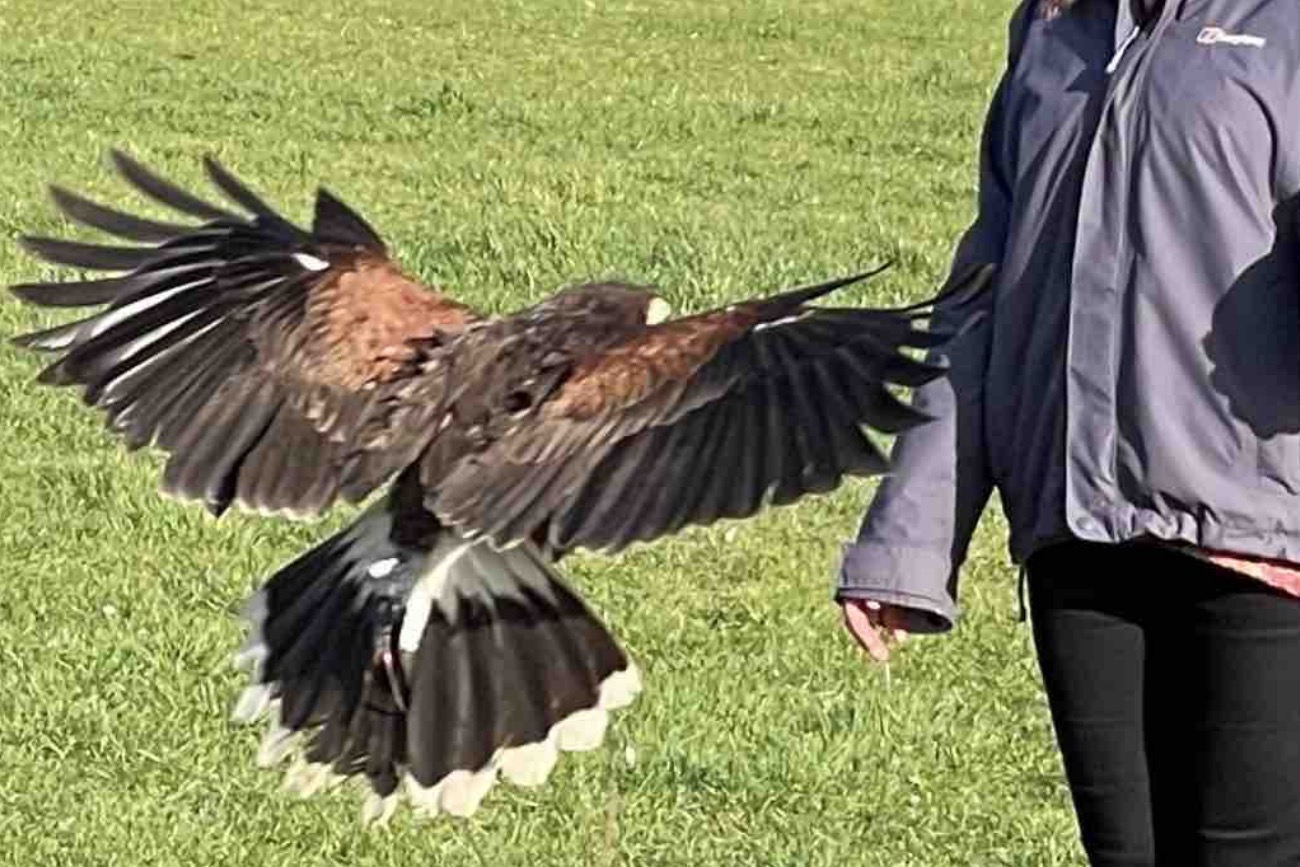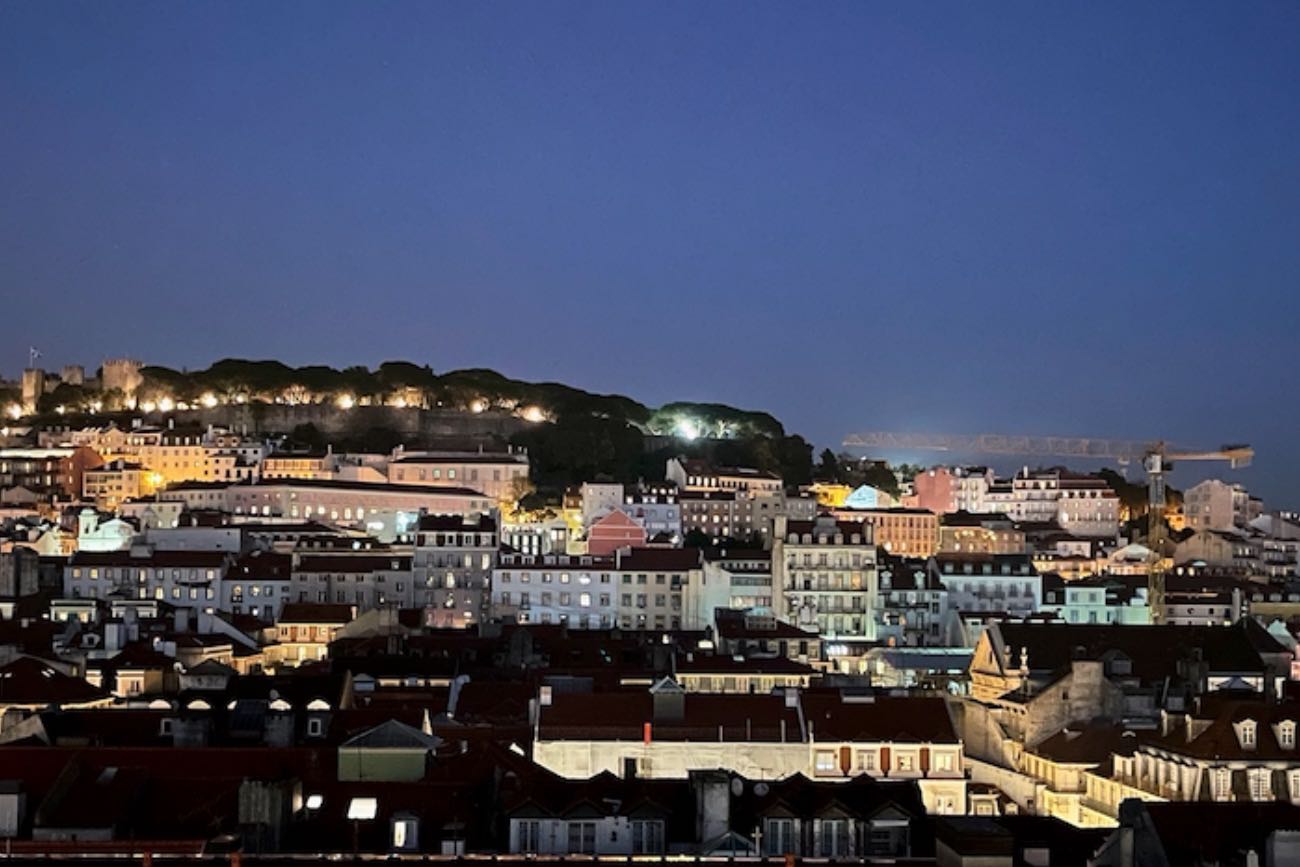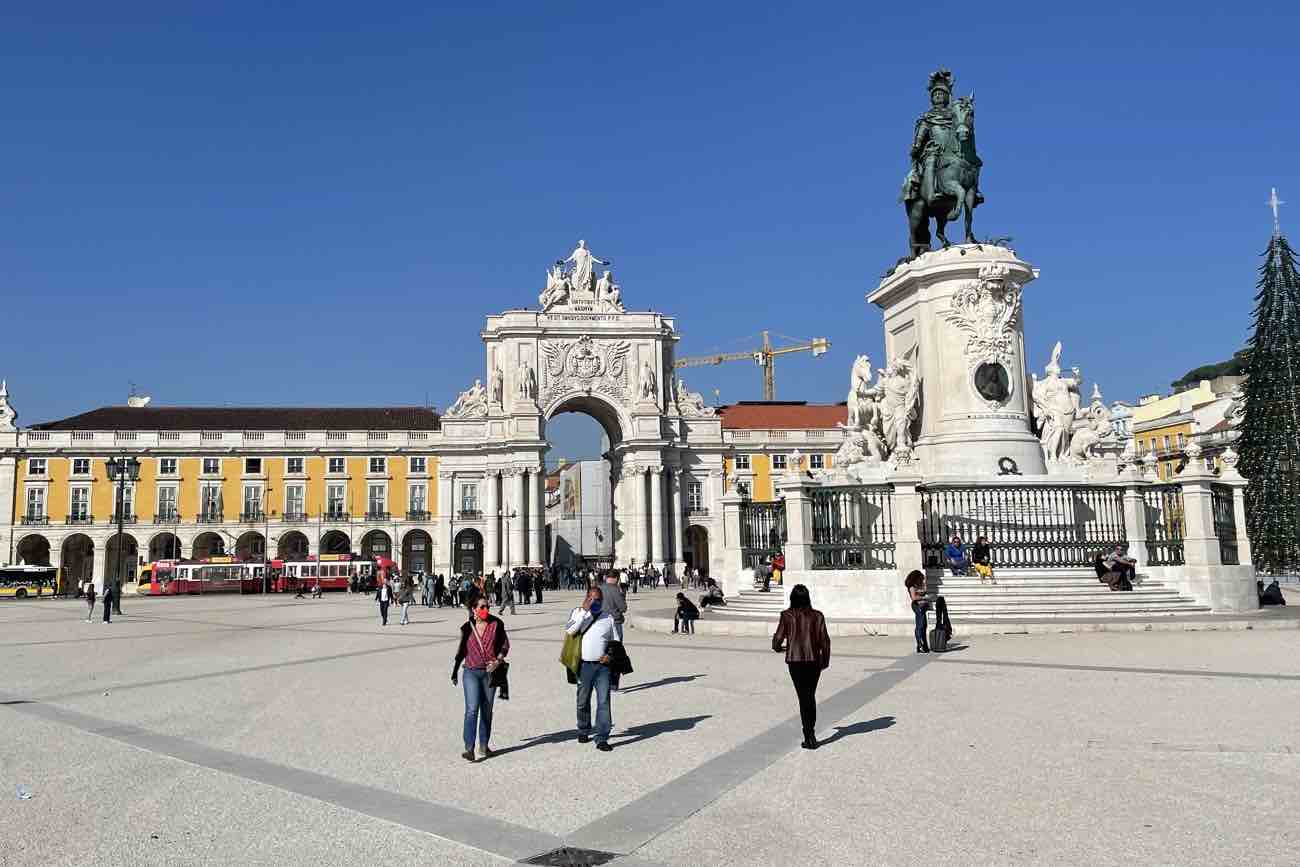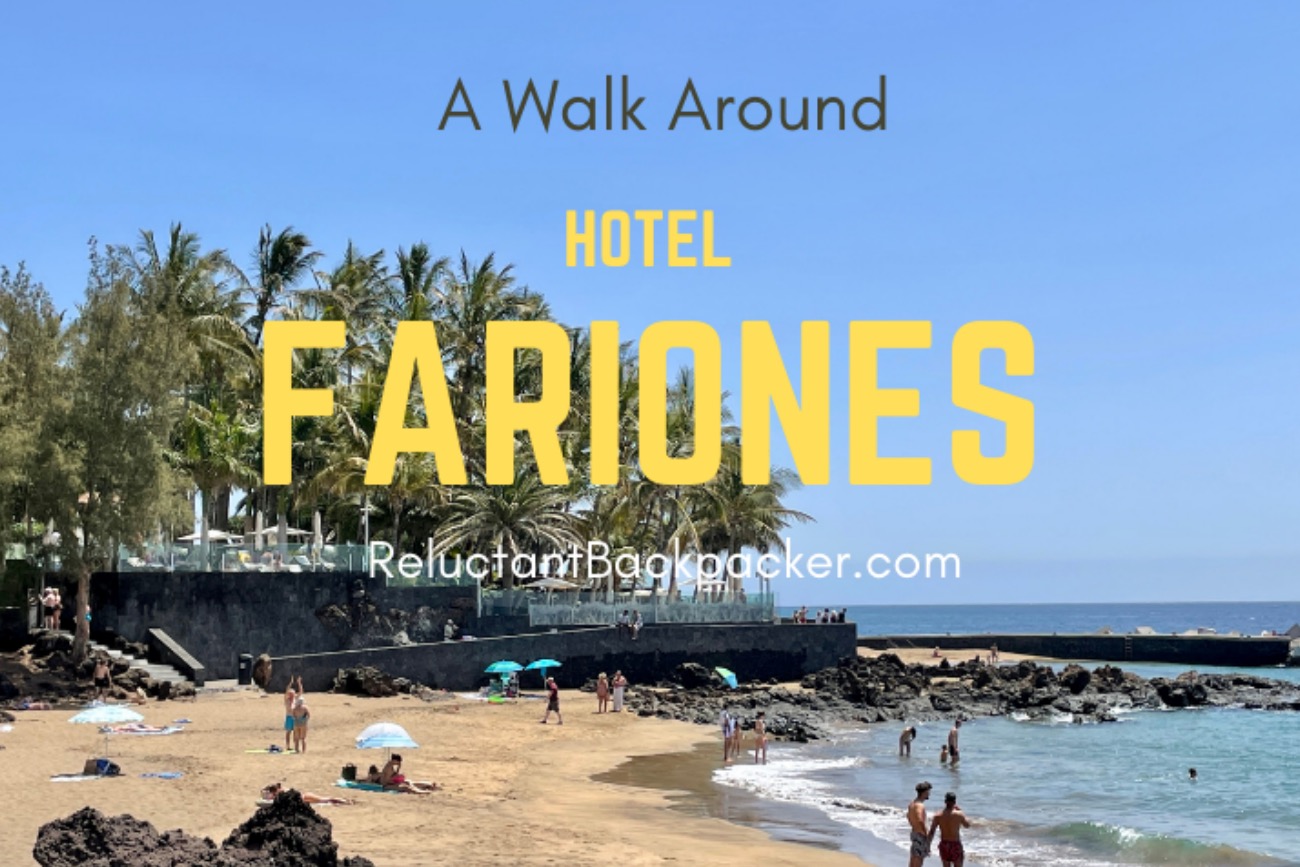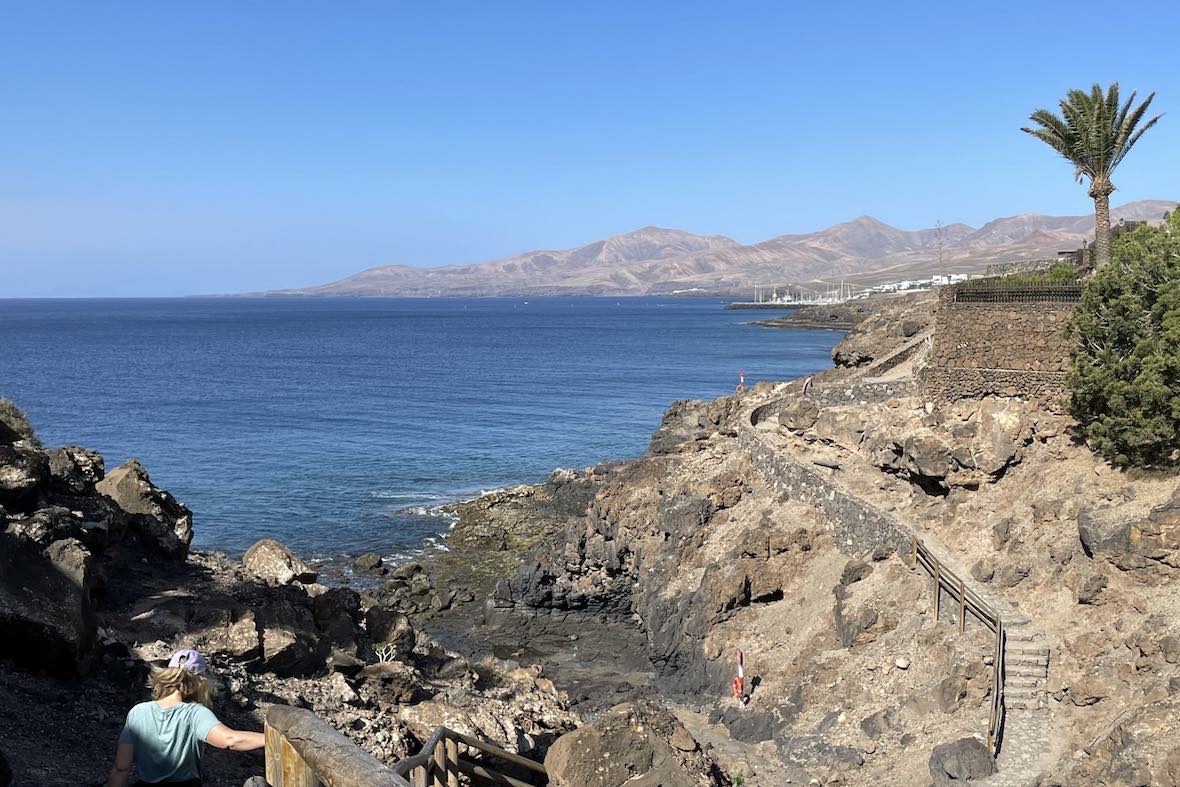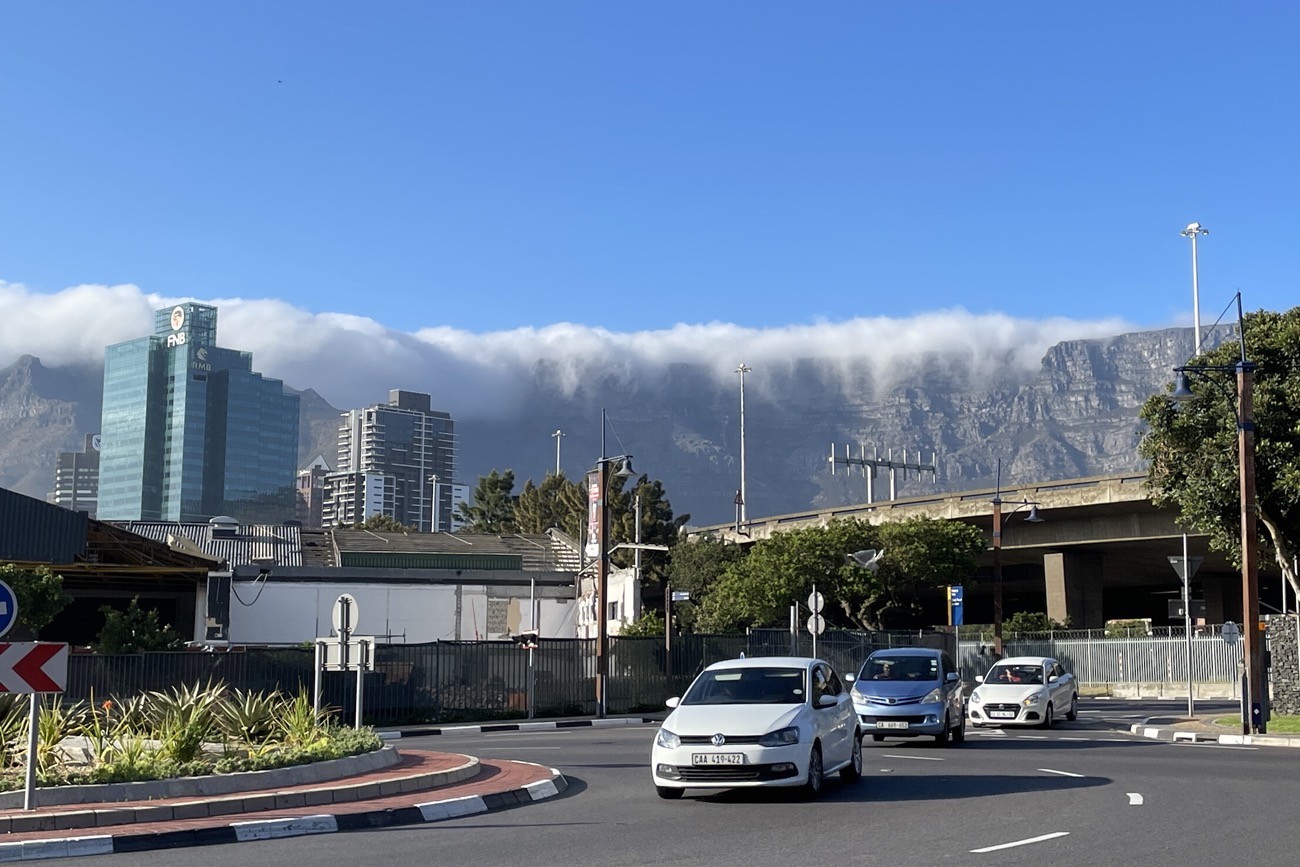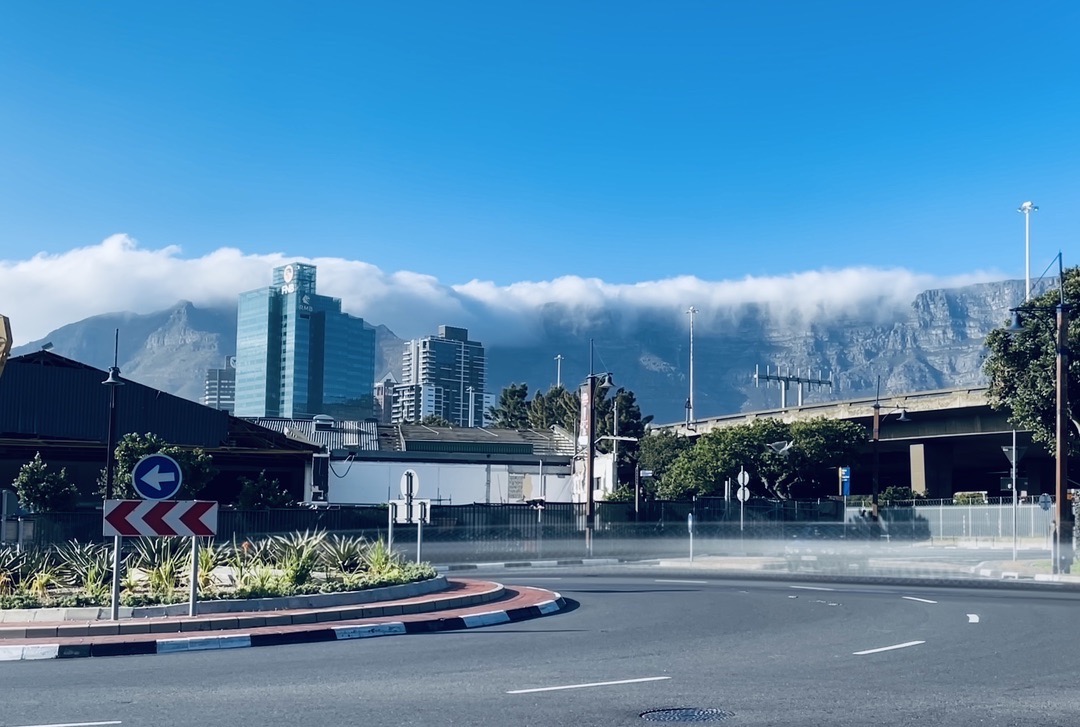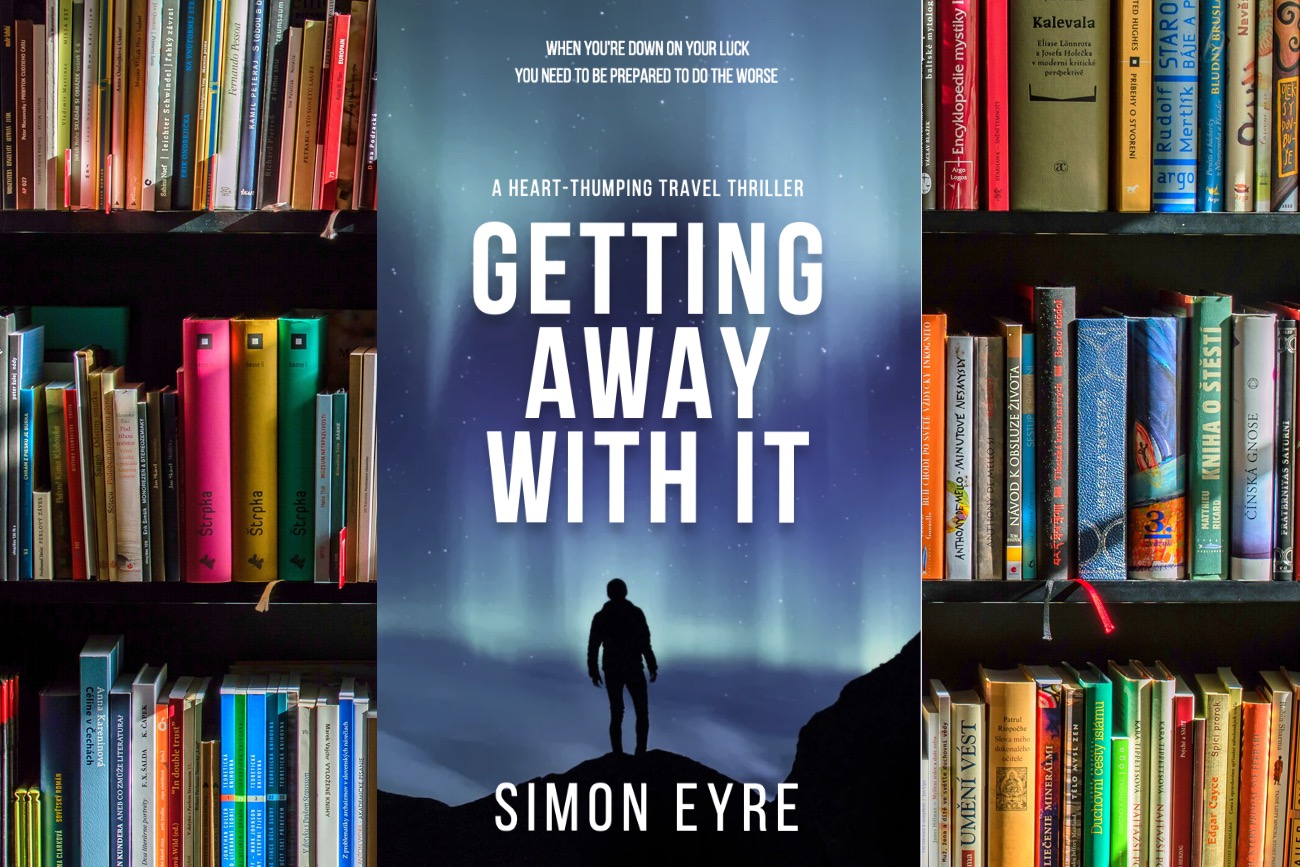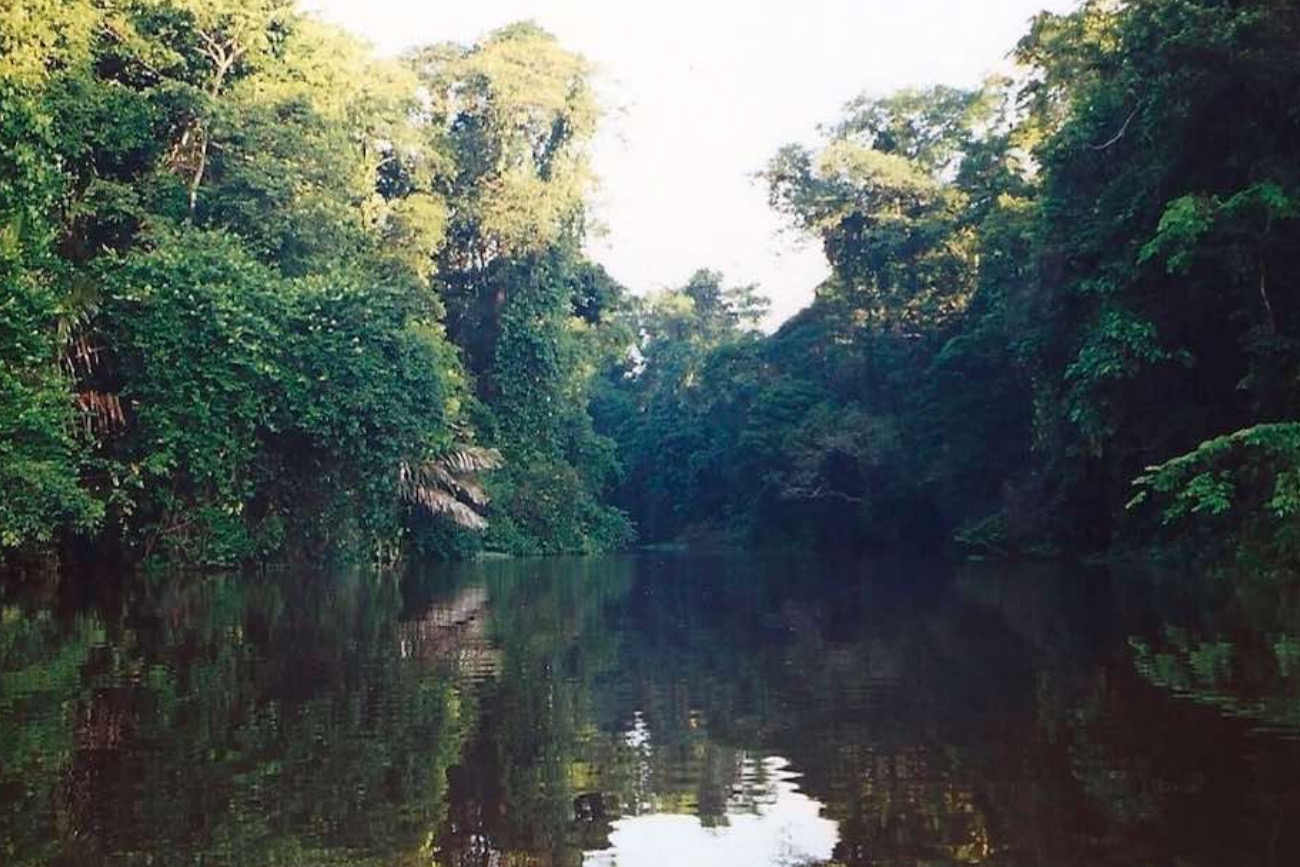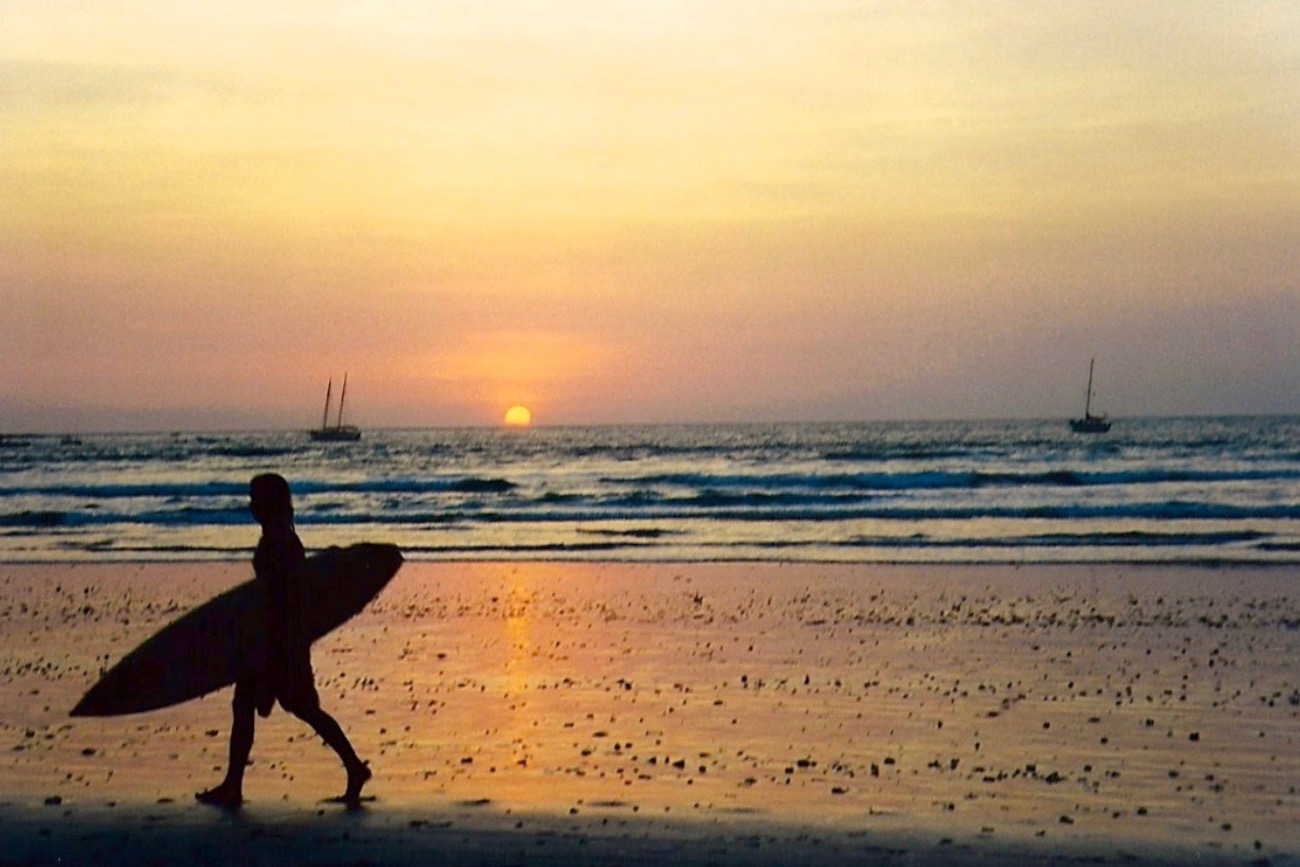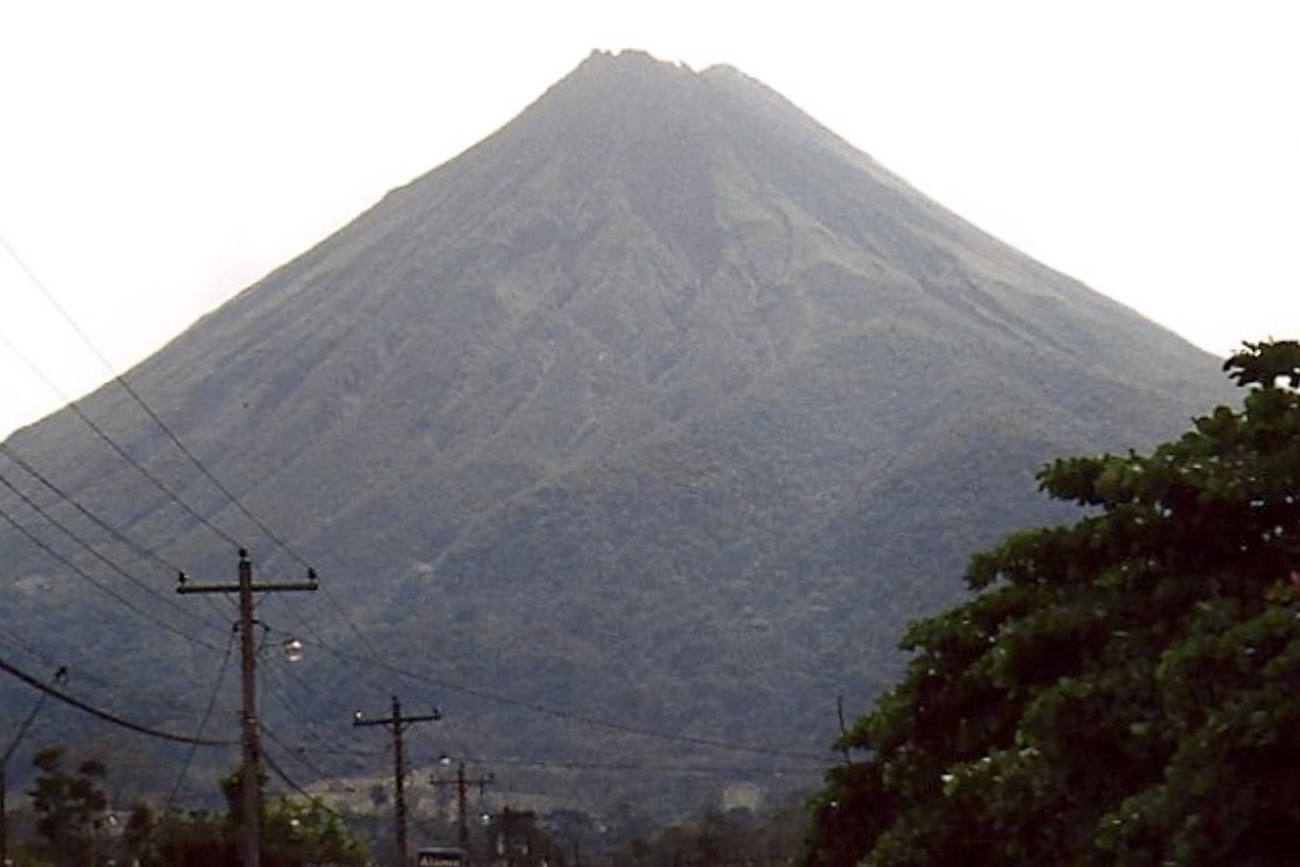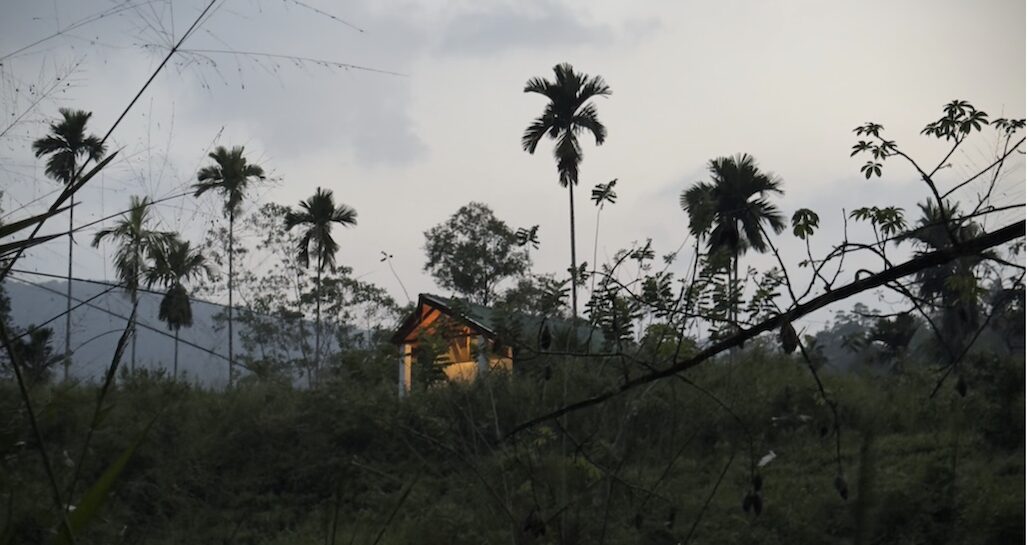Epic Lands of Ice and Fire – The Ultimate South Iceland Itinerary
The raw beauty of the South Iceland coast awakens you like a shot in the arm with purifying glacial water, soothing your soul with its enchanting vistas. In July 2021, Iceland was enjoying zero COVID-19 deaths and single figure infections so I decided to take the plunge and book a trip on the new Play Airlines’ flight from London Stansted to Iceland. It wasn’t long before I fell in love with this rugged, awe inspiring island. This is the story of my tour of the south coast of this magical country.
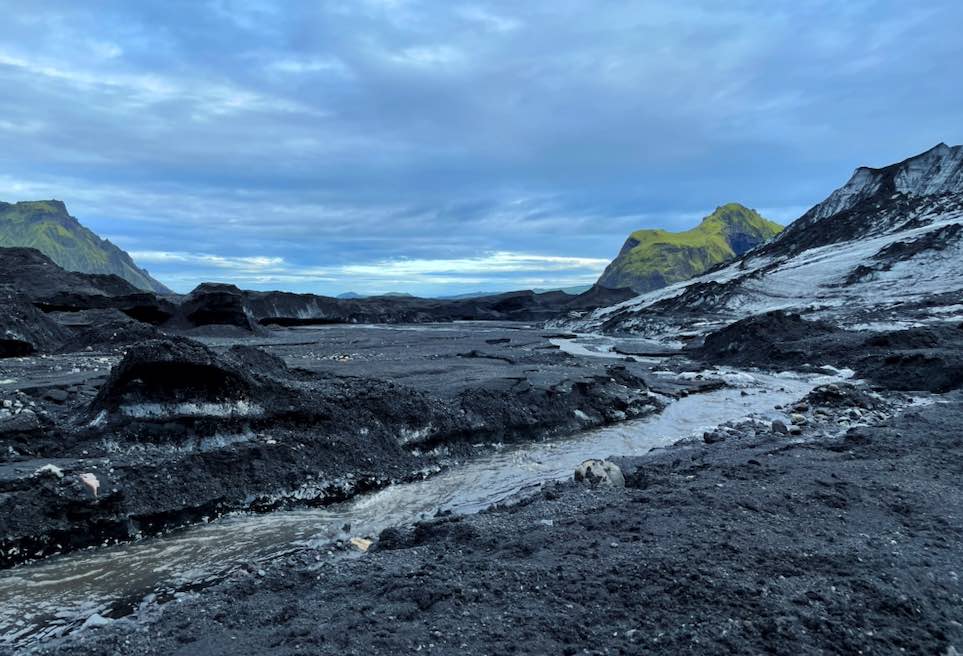
An Epic South Iceland Adventure
“Iceland has so many things that try to kill you” warned Asi, our guide for the tour of the South Iceland coast, as he expertly steered our minibus through the little amount of traffic that thronged the pristine mettled road leading out of Reykjavik. He went on to explain that unlike say Australia, it was not the Icelandic wildlife that may kill you. Unlike the bandit country of Mexico, it wouldn’t be criminals that kill you (there is very little crime on Iceland). You won’t die from water borne disease, the water is naturally filtered and as pure as ice. “It is the island itself that tries to kill you” Asi elucidated, with a dramatic sweep of his arm signalling the black mountains visible on the horizon before us.
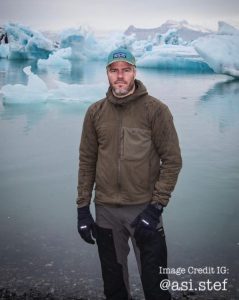 Asi, a typical strapping, blond, bearded Viking, was not exaggerating. He wasn’t spinning yarns to secure our undivided attention. Sure, it could not be denied that one or two of us sitting in the back had begun to nod off, the previous night’s drinks in the Session Brewhouse now obviously a bad idea. However, we now all sat at the edge of our seats, soaking in his words like primary school children listening to their favourite teacher. He was, of course, referring to Iceland’s natural perils, such as deep fissures hidden by snow and ice on the glaciers. Of bubbling lava that flowed spectacularly from some of the most active volcanos on earth. He also warned us of the freezing, dark seas with their powerful rip tides and of unpredictable, devastating earthquakes. Iceland really is the land of ice and fire. A juxtaposition of unrivalled verdant beauty and yet a hellish personification of Dante’s inferno.
Asi, a typical strapping, blond, bearded Viking, was not exaggerating. He wasn’t spinning yarns to secure our undivided attention. Sure, it could not be denied that one or two of us sitting in the back had begun to nod off, the previous night’s drinks in the Session Brewhouse now obviously a bad idea. However, we now all sat at the edge of our seats, soaking in his words like primary school children listening to their favourite teacher. He was, of course, referring to Iceland’s natural perils, such as deep fissures hidden by snow and ice on the glaciers. Of bubbling lava that flowed spectacularly from some of the most active volcanos on earth. He also warned us of the freezing, dark seas with their powerful rip tides and of unpredictable, devastating earthquakes. Iceland really is the land of ice and fire. A juxtaposition of unrivalled verdant beauty and yet a hellish personification of Dante’s inferno.

As we drove over a newly constructed concrete bridge, Asi pointed out the previous structure, that now lay beside the road. Its thick, iron girders twisted in all directions like knotted string, the tumultuous impact of a torrential flash-flood that had simply chewed up the bridge then tossed it aside as if it were constructed from Lego.
“Don’t worry”, Asi reassuringly concluded, “with an expert looking out for you, you will be safe, that is why I am here. To guide and protect you.”.
Seljalandsfoss WaterfallS
As we trundled along the arrow straight road, the sun came out and, in the distance, a magical sight appeared. Through the mini-bus windscreen we stared as sun’s rays glistened on the foamy, white slide of an enormous waterfall as it cascaded over a sheer wall of rock. Around the surge of water the air sparkled with spray; it a truly mystical sight to behold, as if a huge giant was running his bath. As we drove closer, tiny dots appeared at the bottom of the waterfall and it soon became clear these were people, the gargantuan column of water dwarfing them into tiny pinpricks.
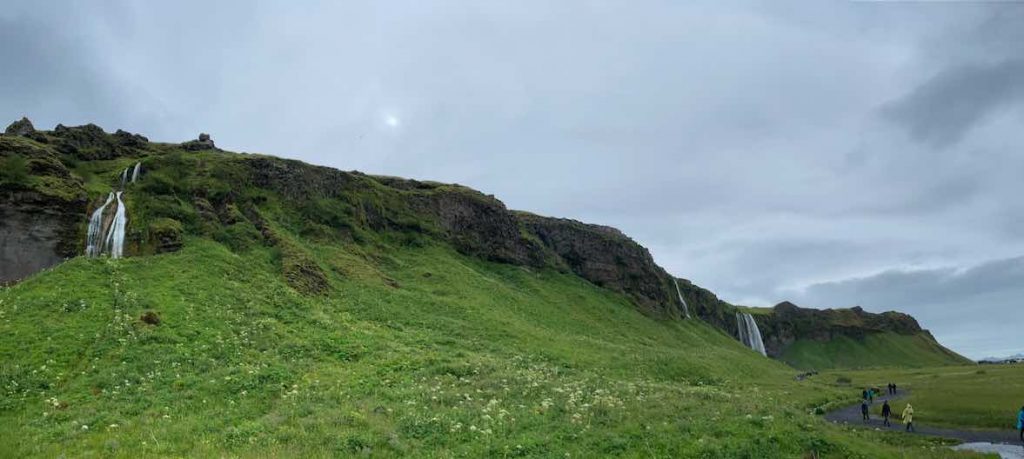
This was the Seljandsfoss waterfall, a 65-metre-high tumultuous cascade of water fed by the clear waters of the Eyjafjallajökull glacier. As we walked the paths leading around the edge of the waterfall’s receptive pool, our senses were bombarded with the roar of the gushing water, the sweet taste of pure glacial air and an icy tingle as the mist dances on your exposed skin. The path takes us right behind the waterfall into a high, shallow cave. As we peer out through the watery curtain at the blurred landscape beyond, the waterfall’s roar becomes deafening. Our place in nature is affirmed as we feel tiny, helpless and awed by this natural phenomenon before us.
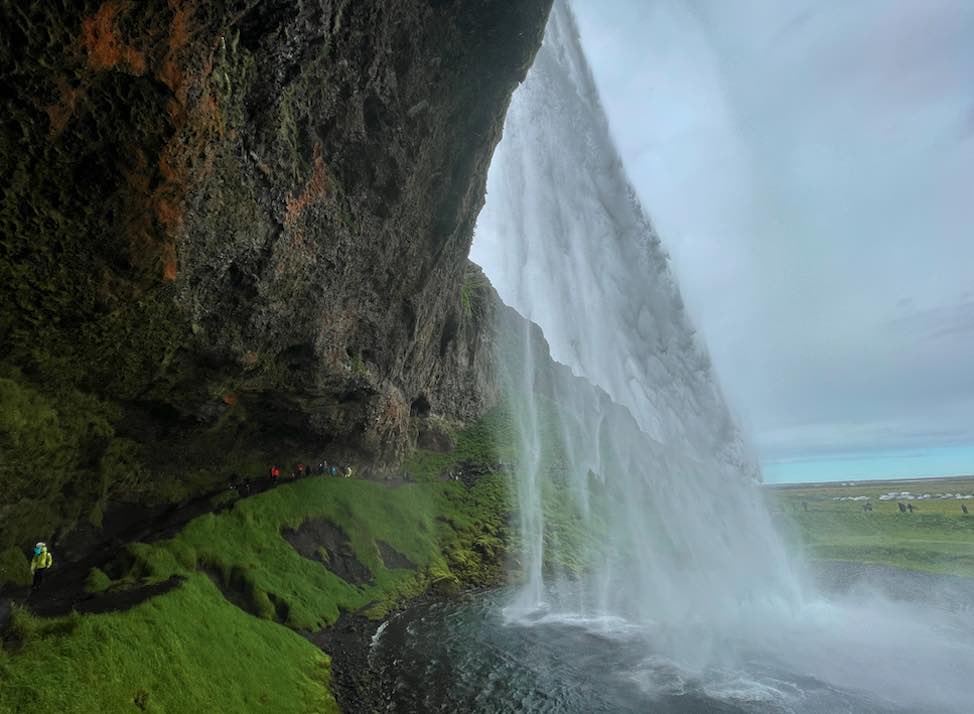

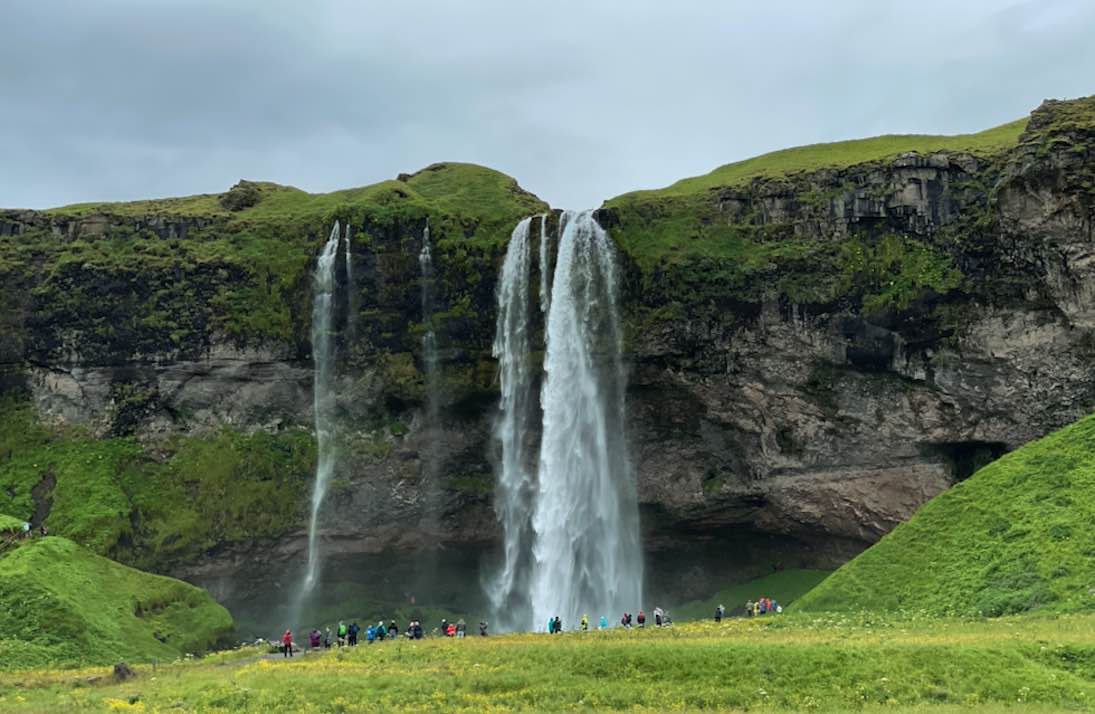
Once we finished marvelling at Seljandsfoss, unlike most visitors to this area, we followed Asi’s recommendation and walked the five-minute trail to the nearby canyon waterfall of Gljufrabui. Here, inside a cave, a towering funnel of deafening, gushing water plummets from far above into the pool inside the moss-covered canyon (image credit: Asi Stef – The Caribbean Vikings).
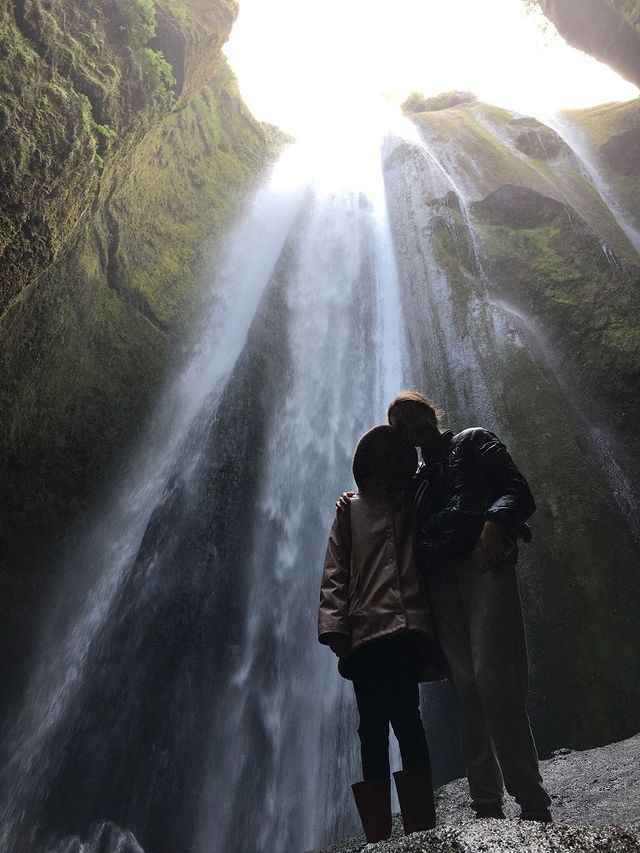
Skogafoss Waterfall
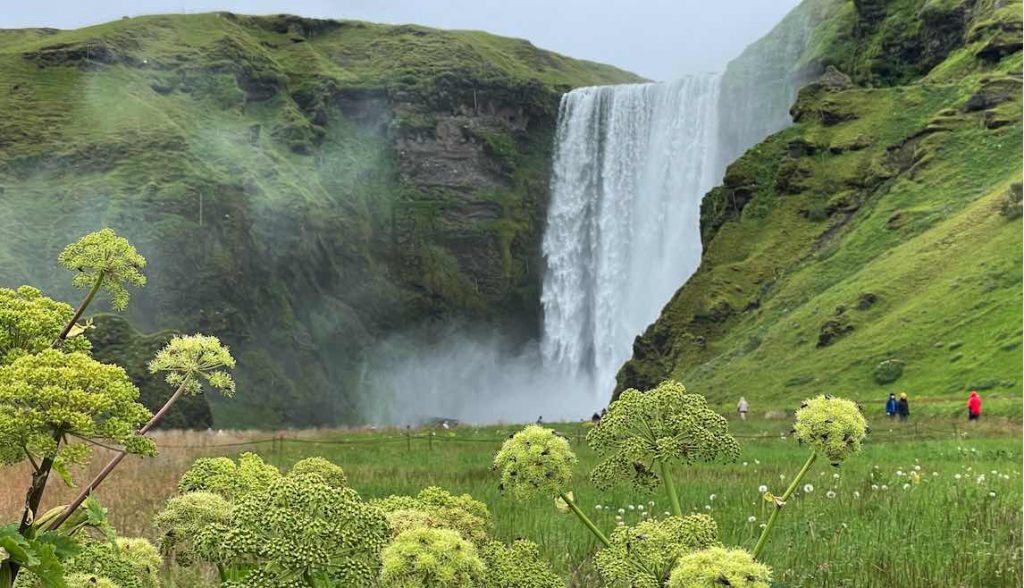
After a short drive eastward along the south coast, we came to another waterfall, Skogafoss. This is the great thing about Iceland, you could spend weeks simply visiting each of its waterfalls and never be bored as each one is strikingly different, each with its own characteristics and just as stunningly mesmerising than the others.
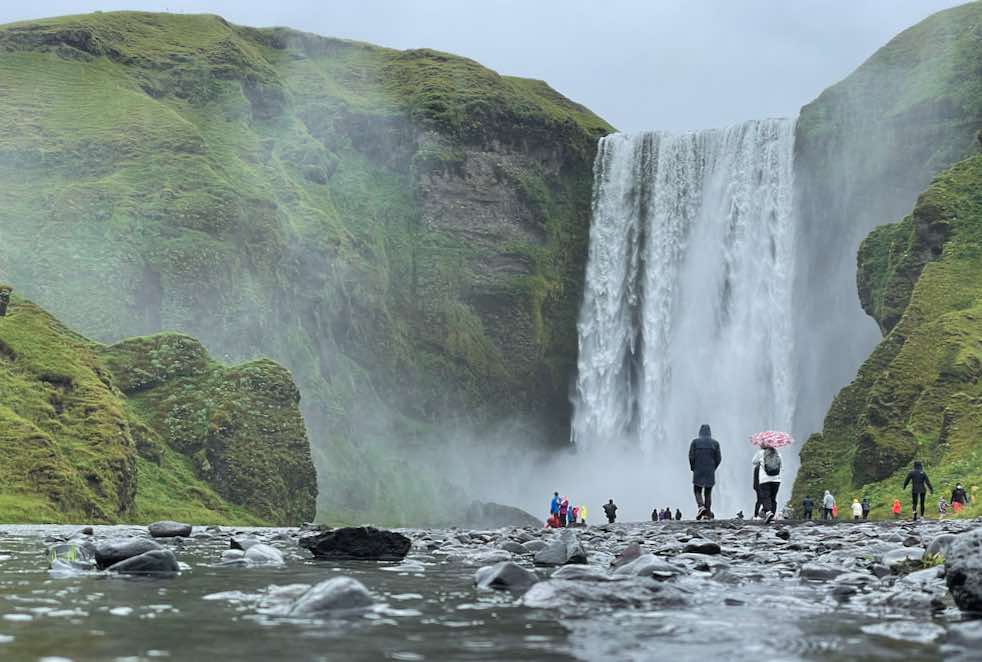
Skogafoss fall was even larger and arguably more spectacular than Seljandsfoss, as it dumps a tumultuous volume of water over a 60 metre high cliff. On sunny days, the mist formed as the glacial waters crash into the river below, dances majestically with twinkling spectrums of refracted light. There are steps leading all the way to the top of the fall, providing an alternate view of the power of nature as the river speeds, then leaps over the edge of the cliff into the abyss.
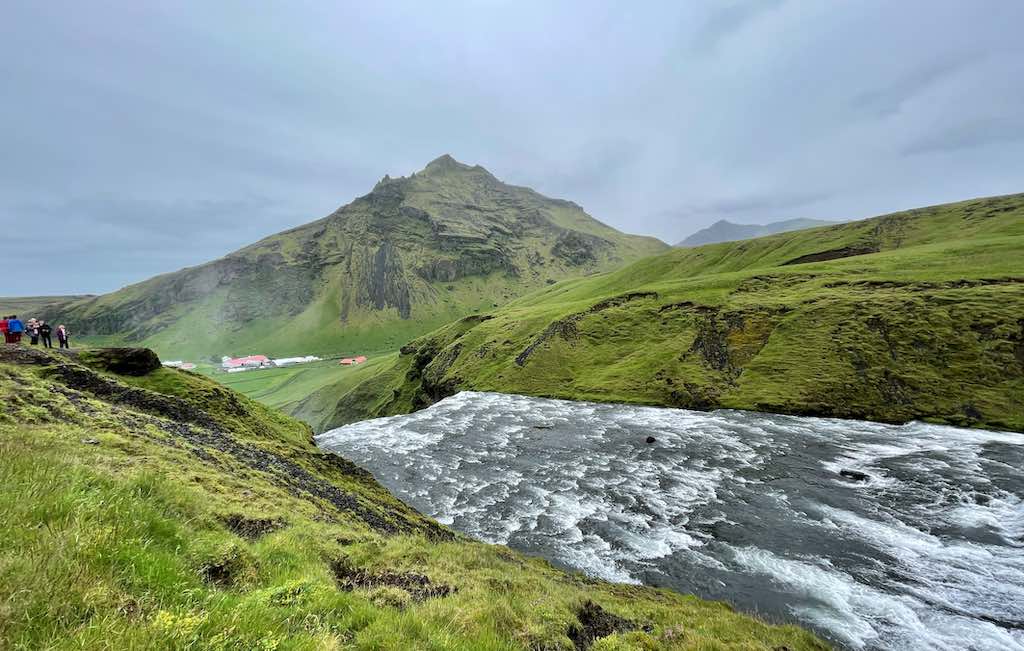
Reynishverfisvegur – South Iceland Black Beach
After a lunch stop at the busy Black Beach Restaurant, we had plenty of time to explore the beach admiring the weird vertical rock honeycomb columns of the Halsanefshellir cave. Almost like an upside down version of Northern Ireland’s Devil’s Causeway, the caves outer and inner walls give you the impression that some giant Viking god had, many millenniums ago, built the hillside from huge straws that had petrified into honeycombed girders of solid rock. As we head towards the shoreline, the shiny black pebbles become progressively smaller in diameter, turning from boulders at the top of the beach, to pebbles and finally to fine, totally jet black sand.
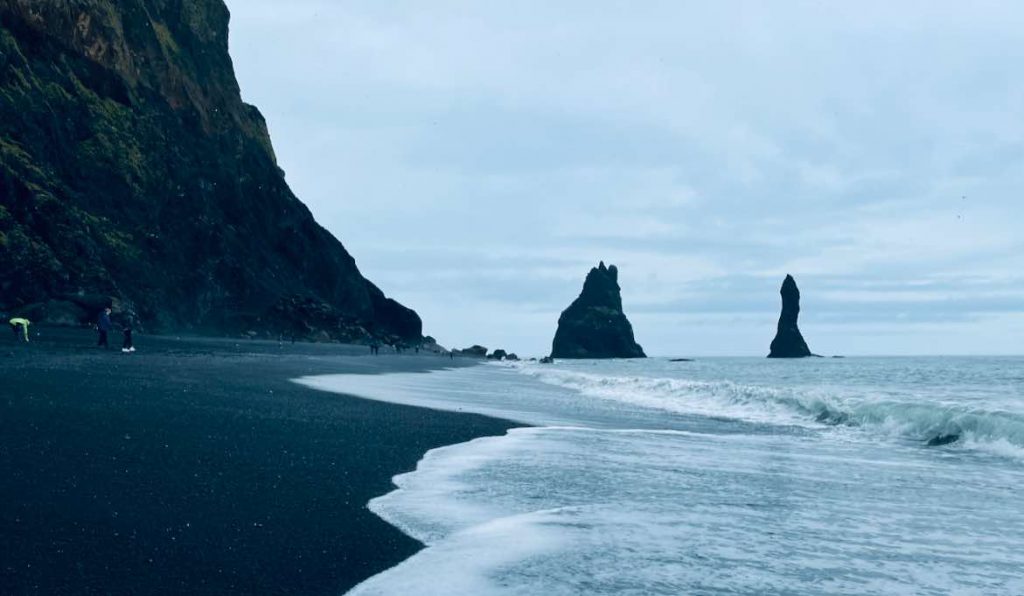
There is something infinitely calming about Black Beach. It could be the charcoal gradients of the pebbles and sand against the blue-black rolling waves and menacing, moody skies, but something makes you feel part of the landscape, at one with your natural surroundings.
Closer to the cliffs, scores of puffins wheel clumsily above our heads flying between the sheer cliffs and the lashing waves of the sea in search of sprats.
Across the bay, through the mist the Reynisdrangar “three dwarves”, three pinnacles of rock stranded in the seas offshore, are visible. Mythology claims they were dwarves (or maybe elves) trying to come ashore during a raging storm, but alas, they became bogged down in the deep, black sandy seabed and have remained stranded ever since. So near yet so far from their homeland.
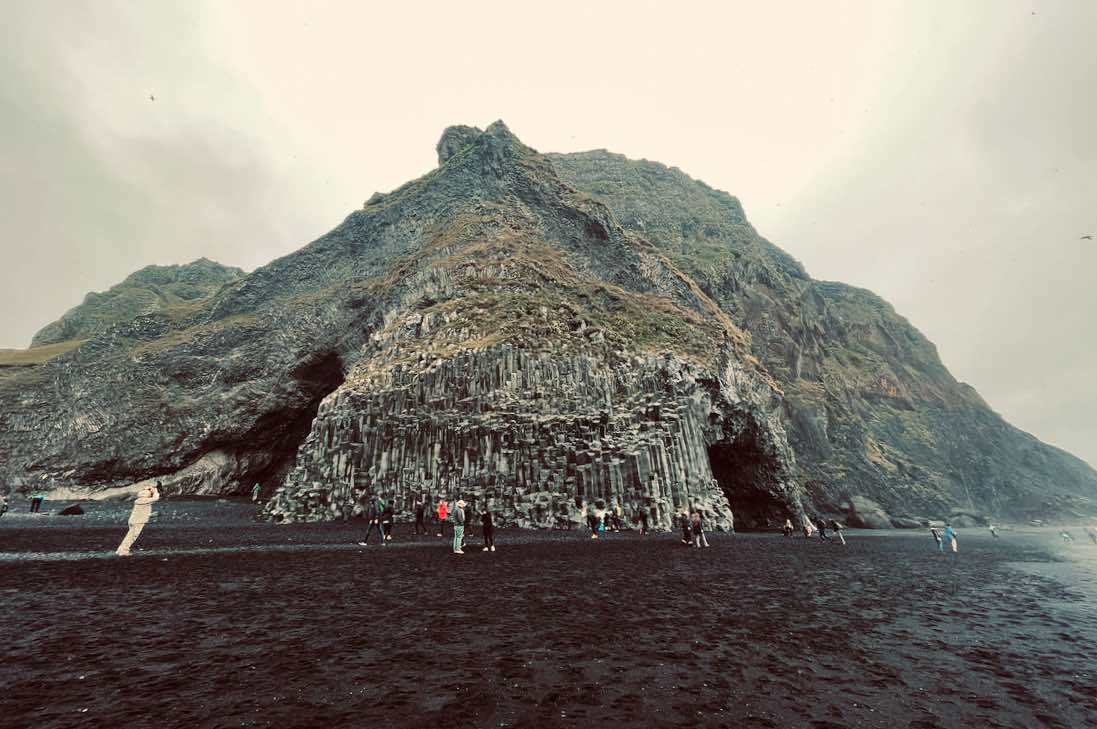
The Puffins of Dyrholaey
After exploring Black Beach, we climbed back into the minibus and headed around the headland to Dyrholaey cove. There are only a few ‘must see’ animals on my bucket list, and Asi promised us we’d get to see one of these – puffins.

He wasn’t to disappoint as he took us on a slight detour to a rocky promontory to the East of Black Beach. As we walked down from the car park the panoramic sea views of Reynisflara make a cinematic tableau stretching from the 3 Goblins of Reynisdrangar to the East then across the bay to the volcanic rock arch of the Dyrholaey Peninsula to the West. Stunning landscapes are not the main reason to come here though. It is the rather charming colony of puffins that, in their hundreds, cling to tufts of green grass on the cliffs, almost within touching distance and definitely within iPhone camera capture distance.
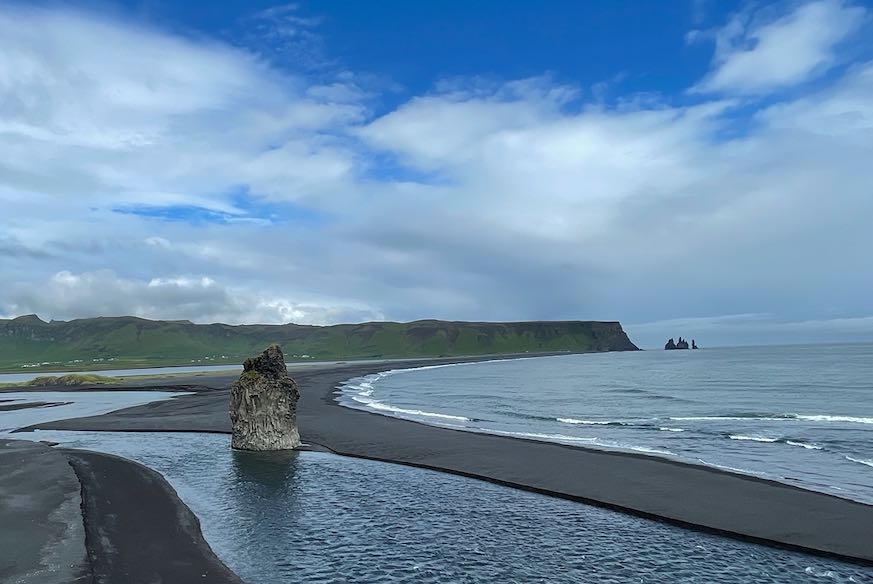
There is also a visitors’ centre by the main car park with clean toilets, the obligatory souvenier shop and small café.
Hjorlefishofol Hellir (The Yoda Cave & Top Gear)
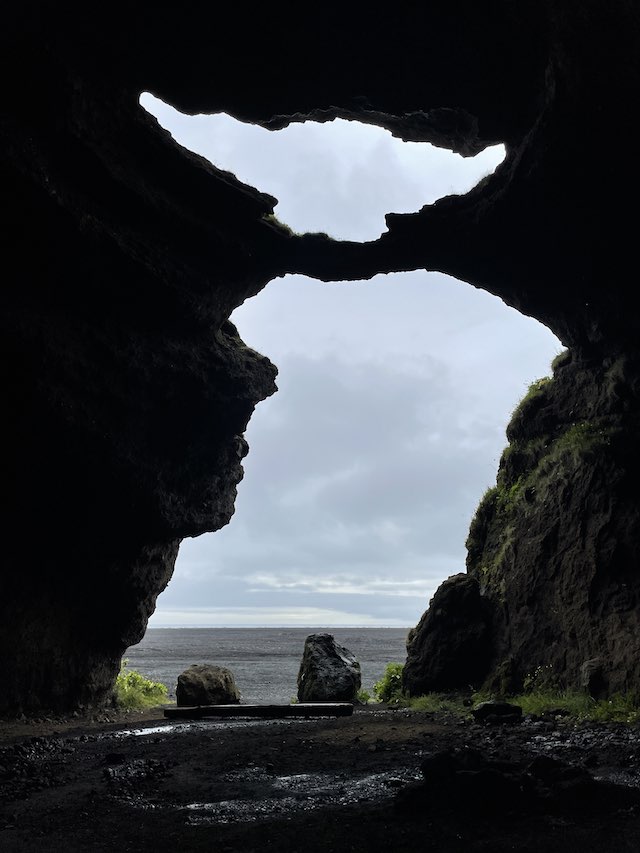
On another of his value-added detours, Asi took us across a barren, rock strewn black desert to visit the Hjorlesfishofol cave, also known as Yoda cave due to the shape of its opening resembling the form of Yoda from Star Wars.
As we made to leave the cave, a cavalcade of cars passed by, including an old Rolls Royce, a 1980s Range Rover and a classic Colin Mcrae Rally Car. It was the BBC’s Top Gear team filming for the new series. They were racing these classic British icons on the loose shingle of the black beach ahead of us.
Kotlujokull Ice Caves

After black beach, we headed to the southern edge of the Myrdalsjokull glacier to visit an ice cave. Asi swapped the minibus for what can only be described as a huge monster truck. Four enormous knobbly tyres lifted our transport four feet off the ground. After climbing aboard, we set off along the road East of the pleasant town of Vik, wallowing around every corner like a huge hippo, inducing a hint of travel sickness to even the most hardy of travellers amongst us. Thankfully, after about 20 minutes, without any change in speed, Asi swerved off the tarmac road onto a black, rocky volcanic desert. This is where the fun began, as we bounced around, splashing through watery fords, practically leaping across crevices and riding the peaks and troughs of the uneven crust.
Eventually we came to a halt in a small clearing where we disembarked and were issued our helmets and spiked crampons. After a short safety briefing about walking on ice, we set off towards the glacier.
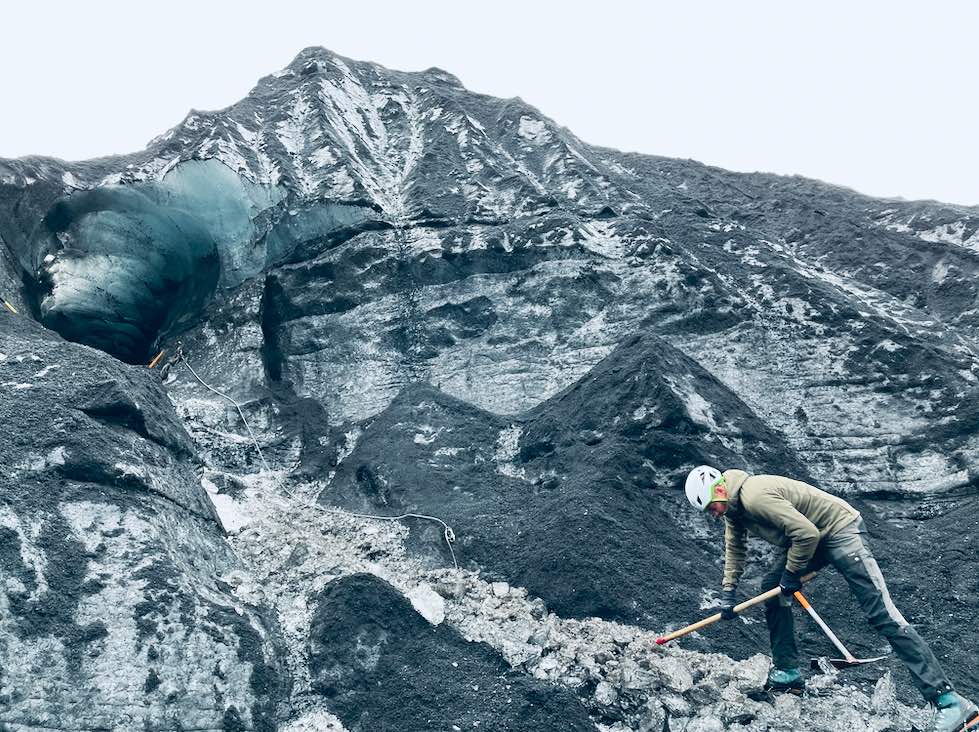
The main ice cave has recently collapsed but the guides had located a new one that had formed during lockdown, so we headed for that.
To get up to the opening of the cave, I had to haul myself up a slope using a rope that had
previously been strung alongside by the guides, my crampons gripping the crushed Ice that Asi had broken up with his ice pick.
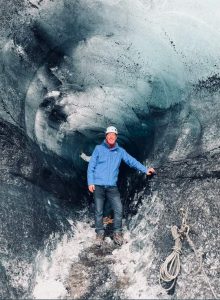 Inside the cave, I was surrounded by a freezing, echoing, sparkling world of the most luminous blue. Above me, the ice was patterned by a series of overlapping concentric circles, etched into the ice by the meltwater that had originally carved out the cave. Perhaps 20 metres ahead of me, where the cave shrank into the point of its cone, was a black hole, perfectly round and about a metre in diameter. “It is possible to go down there on your belly, but I don’t recommend it, beyond the hole, the ice is slippery and there is a sheer drop of maybe 50 metres or so”. I at once adjusted my feet, digging the crampons as deep into the ice as they would go.
Inside the cave, I was surrounded by a freezing, echoing, sparkling world of the most luminous blue. Above me, the ice was patterned by a series of overlapping concentric circles, etched into the ice by the meltwater that had originally carved out the cave. Perhaps 20 metres ahead of me, where the cave shrank into the point of its cone, was a black hole, perfectly round and about a metre in diameter. “It is possible to go down there on your belly, but I don’t recommend it, beyond the hole, the ice is slippery and there is a sheer drop of maybe 50 metres or so”. I at once adjusted my feet, digging the crampons as deep into the ice as they would go.
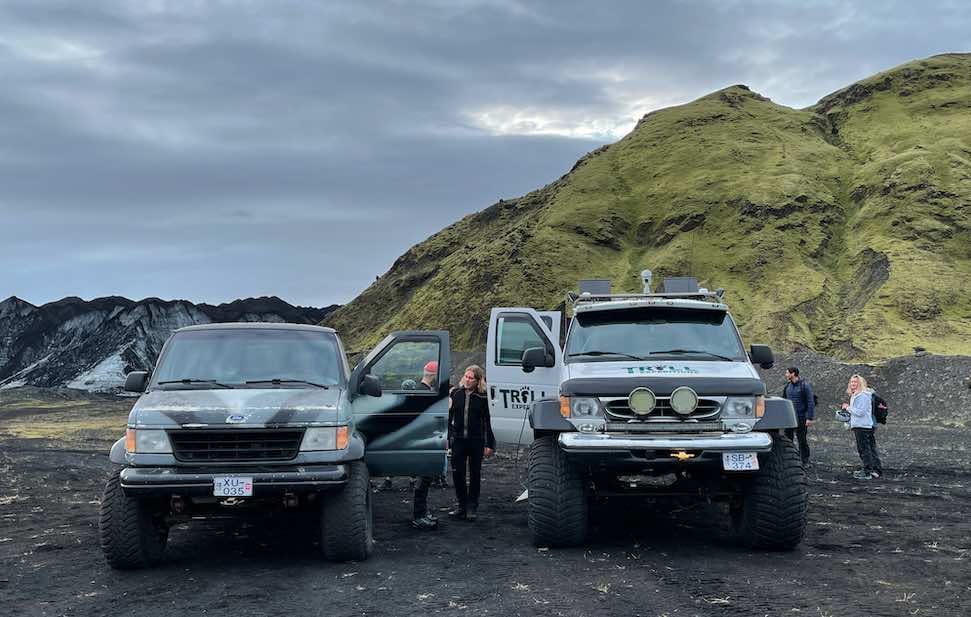
Just as astounding, was the previous ice cave that, before lockdown, used to be the main attraction. Ice melt and earth tremors has caused the cave to collapse, leaving a huge arc of cobalt blue ice, striped with black ash fallen from multiple volcanic eruptions. The layer of ash tell a story, each one representing a different eruption. The thickness of the blue, white ice between the stripes of ash indicate the number of years between each eruption. The thickness of the black volcanic residue tells us how violent that particular eruption had been. A small waterfall cascaded from the rear wall of the newly formed chamber, a tumultuous rush of rapids flowing into a new river out front. It was a privilege to see such blatant evidence of natures impact on the earth and its environment. We stood starting, in total silence, for many minutes soaking in the wonderment of the natural world.

Jokulsarlon Glacier Lagoon and Diamond Beach
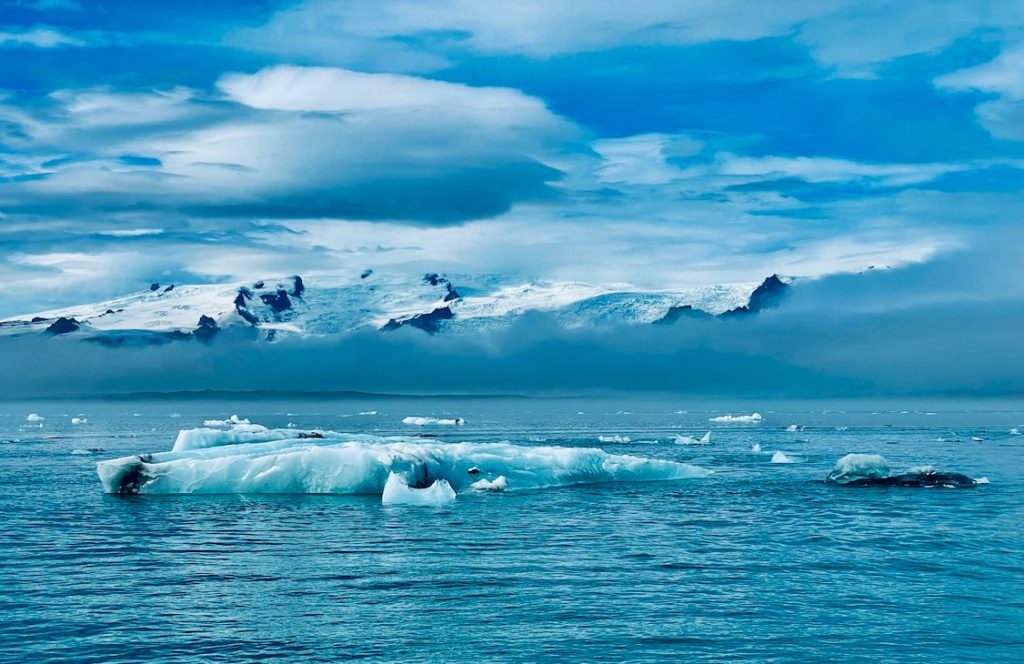
After a night’s rest at the most peaceful, secluded hotel surrounded by green hills, the sea and the distant glint of the glaciers, we climbed aboard our sunflower yellow amphibious vehicle and then trundled along the dirt track, down the concrete launch ramp and into the icy waters of the Jokulsarlon lagoon. Rib boats swirled in the water ahead of us, like wasps around an over ripe windfall apple, pushing potentially lethal small blocks of ice from our path.

As our guide presented the safety briefing, attention was drawn to the dreamy scene that appeared before us. Out of the mist that clung to the blue waters of this huge lagoon, came towering icebergs, dazzling white, the most luminous shades of blue with a backdrop of distant snow-capped mountains.
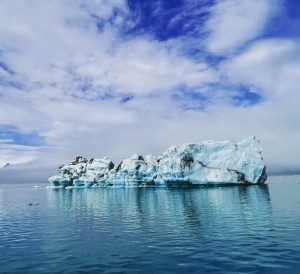
Back on shore, we took a short bus journey around to the other side of the lagoon to Diamond Beach. Standing on the jet-black sands along the estuary shore of the lagoon, we witnessed an even more quixotic vista. From the ghostly mists, floating on the blue fast flowing sea, came huge blocks of sheer, cobalt blue ice. 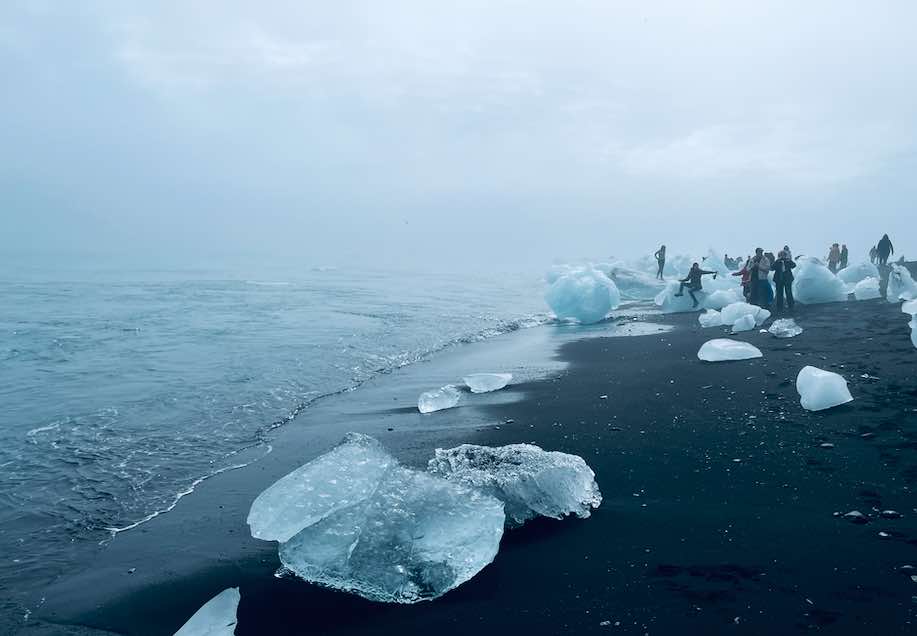
Giant blocks of listening, cobalt blue ice flowed past at a rapid pace, from the lagoon and out to sea. Looking along the shoreline into the blanket of fog, I glimpsed eery structures, glinting in the hazy light. As far as the eye could see were a eclectic mix of icebergs sitting on the black sand. A dazzling display of nature’s carvings, in the most vivid shades of blues, silvers and whites. This is Diamond Beach.
Hiking The Falljokull Glacier
Our final afternoon, before returning back to Reykjavik, was the assumed highlight of the trip – a hike across an actual glacier. Yesterday we’d hiked on the outlying edges of the Myrdalsjokull glacier to visit the Kotlujokull ice cave, but now we were actually going to hike across the icy crust of one of the largest glaciers in Iceland – the Falljokull Glacier.
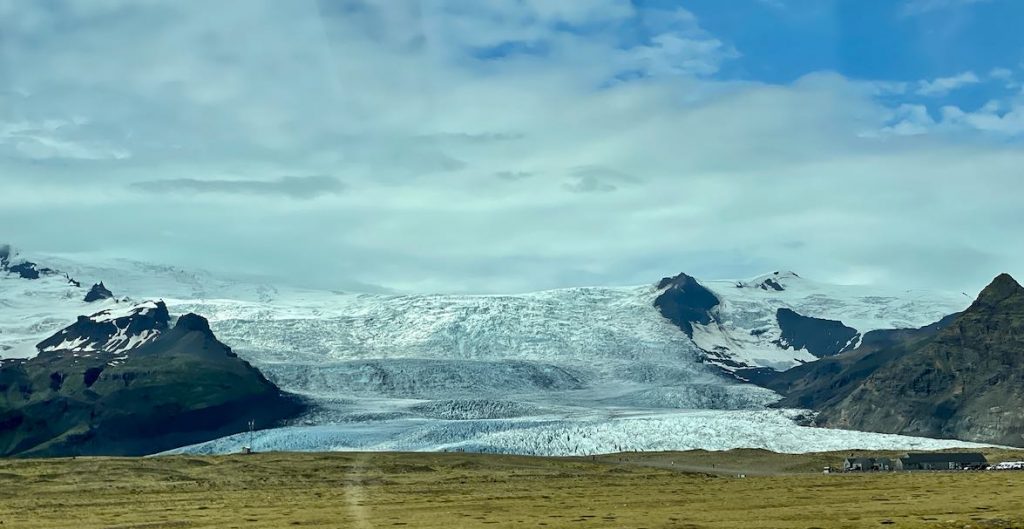
After a safety briefing and getting into our harnesses and helmets, with ice picks in hand we set off in a snake like line across the rocky banks of a glacial river. After crossing a rickety wooden bridge over a wide gushing stream we paused for breath and to admire the sheer wall of ice beside us, possibly 7 or 8 stories high. Using his ice pick Asi pointed south, towards the sea some 2 miles away and explained that only 30 years ago the glacier stretched all the way to the coast. About 250 metres ahead of us, at the far side of the barren basin in which we now stood, was as far as the ice reached before the Icelandic lockdown, less than 18 months ago. Seeing the extent of the speed at which the glacier is shrinking as it melts fully brought home the reality of the peril that climate change presents.

We then began our ascent up a crumbling path, strewn with rocks of all shapes, sizes and colours. As we made our way up the winding path, the sparkling surface of the glacier appeared and we sat to fasten
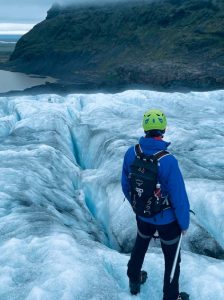
We paused to fit our crampons over our boots, listened intently to a final safety briefing and the our serpent of intrepid hikers began to slowly wind its way onto the thick ice. Walking on thick ice, in crampons requires a little technique which once mastered is quite straightforward but puts immense strain on your calf muscles. You have to tramp, lifting your feet high and stamping the down to ensure the spikes dig into the ice. The line began to stretch as the less athletic began to tire, but we all plodded on excited by the sheer beauty of the ice laid out before us.
The surface of blues, whites and splashes of black volcanic ash, glistened. The ice was slashed at regular points by fissures, mostly only a foot or so wide, but occasionally too wide to jump over.

Some were shallow, others filled with crystal clear waters that blinked in the sunlight that gleamed through the fog forming above us. Some fissures were so deep the water turned from clear to cobalt blue to deep black. Asi explained that in winter, these fissures are often covered in snow or thin ice and are invisible to the untrained eye. He demonstrated how slow progress across the glacier can be in the colder months, needing to probe ahead with the ice pick to gauge the depth of the snow and the solidity of the ice beneath.
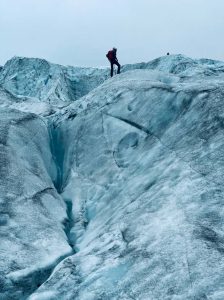 Unfortunately, the fog clinging to the mountain tops above the glacier restricted our view somewhat so we could only imagine how this might look with the scarred, glinting ice leading the eye to snow capped peak high above us. However, turning 180 degrees and looking back down the flow of the glacier, back towards the ocean far away in the distance made up for the restricted panorama ahead.
Unfortunately, the fog clinging to the mountain tops above the glacier restricted our view somewhat so we could only imagine how this might look with the scarred, glinting ice leading the eye to snow capped peak high above us. However, turning 180 degrees and looking back down the flow of the glacier, back towards the ocean far away in the distance made up for the restricted panorama ahead.
After an hour, the hike was starting to take toll on weary legs. We rested a while, digging ice picks into the ice so we could sit without sliding. We drank and filled our water bottles from a stream of the sweetest, clearest water. Drinking on the slippery slope required a degree of dexterity. The technique was to lay the ice pick across the stream, then gripping it with both hands form a plank manoeuvre, with feet apart and crampons digging into the ice so the stream flowed beneath you. It was then possible to dip your head down and drink directly from the flowing water. For me this was one of the highlights of my trip and a bucket list item ticked off. It was sad when the last of the water collected in my Chillies bottle had been drunk.
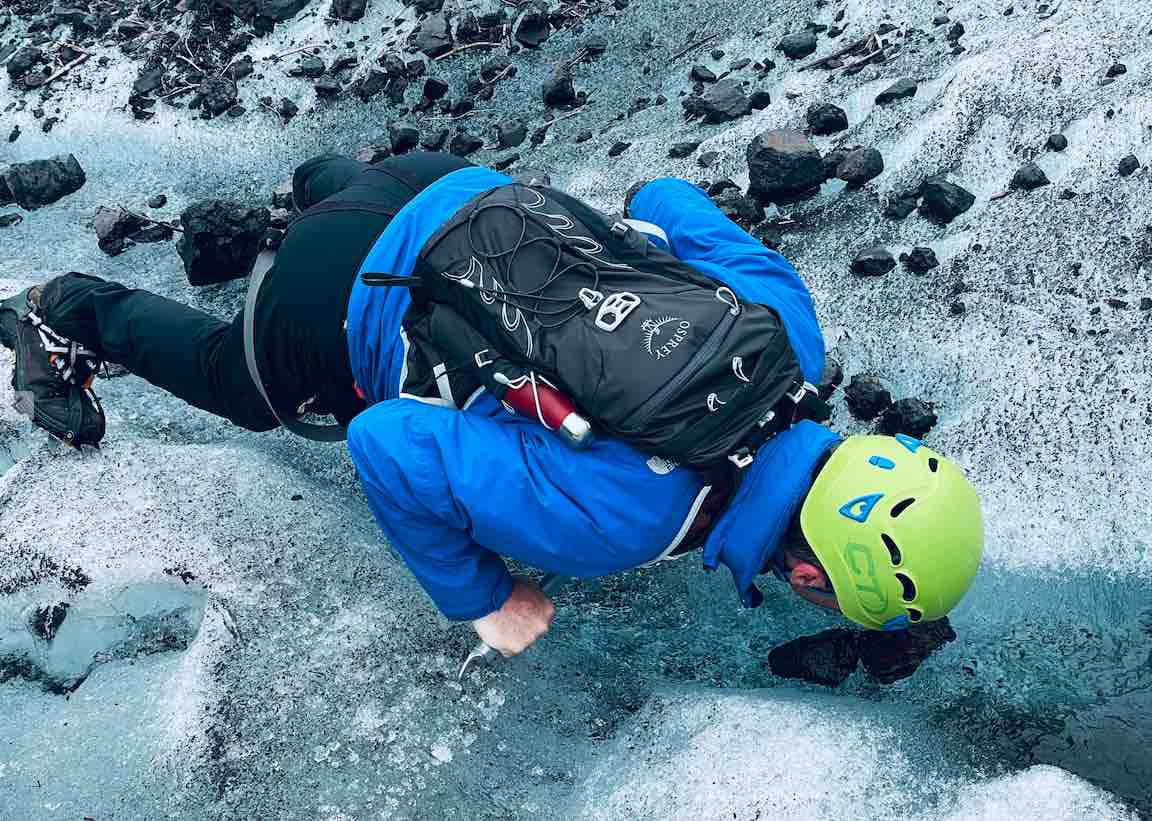
As we made our way back down the glacier we reflected on what was an amazing experience and thanks to this remarkable island, I ticked off yet another item from my bucket list – “Hike a Glacier”. Although this was a whirlwind tour of just the South coast (I’d done a day on the Golden Triangle earlier in the week) we’d seen so many diverse landscapes, natural marvels and beautiful sights to last a lifetime.
South Iceland - Making It Happen
I travelled to Iceland in July, during the season of the midnight sun. Although Iceland is arguably prettier in the winter, the summer has its advantages including longer days allowing you to visit the more popular sites early or late to have them all to yourself.
The weather changes all the time. As the local saying goes “if you don’t like the weather, wait 5 minutes”. A good waterproof jacket and quick drying hiking trousers are recommended, and a warm base layer and under layer. Even if it doesn’t rain (it propbably will at some point) you will get wet walking close to the waterfalls. You’ll need sturdy boots for the ice cave and glacier hike as you will need to wear the provided crampons over your shoes. Support for your ankles is also recommended, so boots rather than shoes. If you travel in Autumn, Spring or Winter, then you’ll need warmer clothing and proper waterproof layers.
South Iceland – Getting There
From the UK, the newly founded Play Airlines offer flights from London Stansted starting as little as £49 each way. I paid about £160 including the extras for a carry-on bag and seats in the exit row for the extra legroom. Jet2 have also started flying to Iceland, and BA and Icelandair also provide flights from many UK airports.
It’s easy to get from Keflavik to the capital Reykjavik using the airport shuttle bus service called Flybus run by Reykjavik Excursions. I bought my tickets online, but most passengers bought them from the kiosk at the airport, or the roaming ticket assistant in the bus park. The standard ticket takes you to the BSI bus station in Reykjavik, which is about a 15-minute walk to the centre. You can also pay a little extra for a second bus to take you to various bus stops around the city.
GETTING Around South Iceland
I took the tour with Troll Expeditions which included transport in a minibus and hotel in a single room on the South Coast as well as hiking boot hire. The benefit of taking a minibus tour as opposed a coach tour is the group will be much smaller. There were 9 on my bus.
If you feel a private tour is more your style, then check out the excellent Caribbean Vikings.
The above itinerary is also entirely feasible as a self-drive tour. You will still need to arrange a qualified and certified guide for the glacier hike and cave tour, as it is too dangerous to do this alone, plus it involves some pretty hairy off road driving. You can also book these individual excursions with Troll or the Caribbean Vikings.
For glacier walking and ice cave visits, its highly recommended that you use a registered guide. To hike can be dangerous and you need special equipment such as crampons, rope, climbing harness, helmet and an ice pick. Your guide will know the best and safest routes and can spot any hidden fissures or other dangers.
As I went in the summer, the midnight sun ensured everywhere was light all day. This makes it possible to visit some sights early or late during the day, thereby avoiding the coaches and crowds.
-
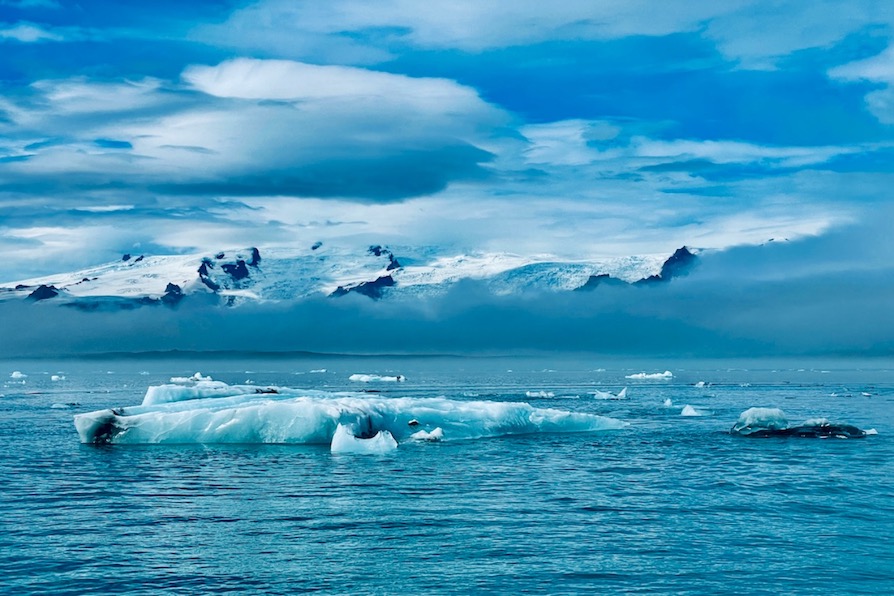
Epic Lands of Ice and Fire – The Ultimate South Iceland Itinerary




